News and Events

Mia Žganjar, PhD student at JSI and a member of the "Toxins and Biomembranes" Programme Group, will present a seminar entitled Advancing oleochemical bioproduction: Insights from Yarrowia lipolytica mRNA-Seq analysis.
Neža Škofljanc, PhD student at JSI and a member of the "Toxins and Biomembranes" Programme Group, will present a seminar entitled Species-wide variation in azole drug resistance in model organism Saccharomyces cerevisiae.
The seminars will be held on-line on Thursday April 18, starting at 14:00. Non-members of our Programme Group, who would like to attend the seminar contact Jože Pungerčar (joze.pungercar@ijs.si) to receive a link.

Maja Hostnik, PhD student at BF UL and a member of the "Toxins and Biomembranes" Programme Group, will present a seminar entitled Influence of GIL01 phage on Bacillus thuringiensis sporulation.
The seminar will be held on-line on Thursday March 14, starting at 14:00. Non-members of our Programme Group, who would like to attend the seminar contact Jože Pungerčar (joze.pungercar@ijs.si) to receive a link.

Lara Larisa Popošek, PhD student at BF UL and a member of the "Toxins and Biomembranes" Programme Group, will present a seminar entitled The quest for new lipid-binding proteins and biotechnological applications.
Špela Koren, PhD student at JSI and a member of the "Toxins and Biomembranes" Programme Group, will present a seminar entitled A dynamic interplay of cytosolic and lysosomal lipid droplet breakdown pathways in starved breast cancer cells.
The seminars will be held on-line on Thursday February 15, starting at 14:00. Non-members of our Programme Group, who would like to attend the seminar contact Jože Pungerčar (joze.pungercar@ijs.si) to receive a link.

Marija Kisilak, PhD student at FCCT UL and a member of the "Toxins and Biomembranes" Programme Group, will present a seminar entitled MLKL – The Phantom Menace: Oligomerization and membrane interaction
Tim Nograšek, MSc student at FCCT UL and a member of the "Toxins and Biomembranes" Programme Group, will present a seminar entitled Transport of LINE1 retrotransposons into the nucleus by karyopherins?
The seminar will be held on-line on Thursday January 18, starting at 13:00. Non-members of our Programme Group, who would like to attend the seminar contact Jože Pungerčar (joze.pungercar@ijs.si) to receive a link.

Leja Perne, PhD student at JSI and a member of the "Toxins and Biomembranes" Programme Group, will present a seminar entitled Lipid droplets and the control of cell fat(e)?
The seminar will be held on-line on Thursday December 14, starting at 14:00. Non-members of our Programme Group, who would like to attend the seminar contact Jože Pungerčar (joze.pungercar@ijs.si) to receive a link.

Eva Jarc Jovičić, PhD researcher at JSI-B2 and a member of the "Toxins and Biomembranes" Programme Group, will present a seminar entitled The mobilization of fat stores from lipid droplets regulates metabolic and energy demands of starving cells.
The seminar will be held on Thursday, November 16 starting at 14:00 in lecture room B220 (2nd floor, Biochemistry building) at the Jožef Stefan Institute (JSI), Jamova cesta 39, Ljubljana.

Mojca Dobaja Borak, PhD student at MF and JSI and a member of the "Toxins and Biomembranes" Programme Group, will present a seminar entitled Reversible and transient thrombocytopenia induced by snake C-type lectin-like proteins (snaclecs) from the nose-horned viper venom.
The seminar will be held on-line on Thursday October 19, starting at 14:00. Non-members of our Programme Group, who would like to attend the seminar contact Jože Pungerčar (joze.pungercar@ijs.si) to receive a link.
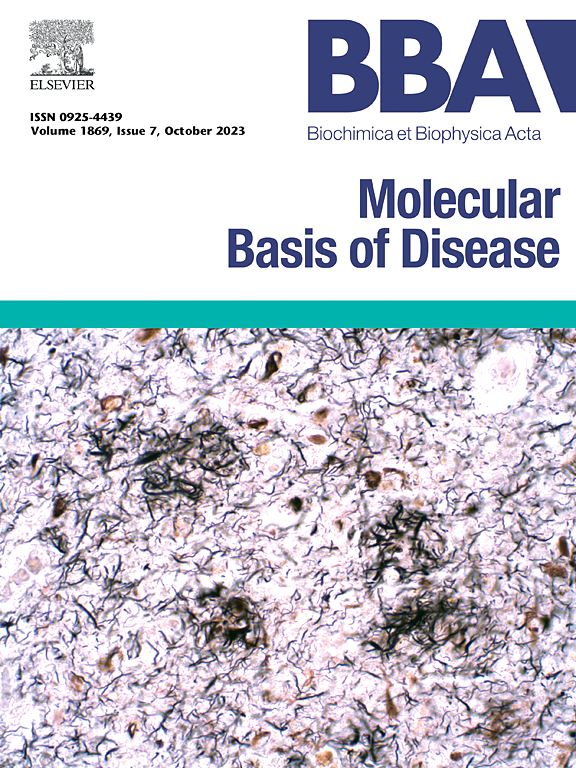
The extensive review paper entitled: Nicotinic acetylcholine receptors in cancer: limitations and prospects written by Tadeja Bele, Tom Turk and Igor Križaj was accepted for publication in BBA - Molecular Basis of Disease in August 2023.
Nicotinic acetylcholine receptors (nAChRs) have long been considered to solely mediate neurotransmission. However, their widespread distribution in the human body suggests a more diverse physiological role. Additionally, the expression of nAChRs is increased in certain cancers, such as lung cancer, and has been associated with cell proliferation, epithelial-to-mesenchymal cell transition, angiogenesis and apoptosis prevention. Several compounds that interact with these receptors have been identified as potential therapeutic agents. They have been tested as drugs for treating nicotine addiction, alcoholism, depression, pain and Alzheimer's disease. This review focuses on nAChR-mediated signalling in cancer, presenting opportunities for the development of innovative nAChR-based anticancer drugs. It displays the differences in expression of each nAChR subunit between normal and cancer cells for selected cancer types, highlighting their possible involvement in specific cases. Antagonists of nAChRs that could complement existing cancer therapies are summarised and critically discussed. The authors hope that their review will stimulate further research on the role of nAChRs in cancer potentially leading to innovative cancer therapies.
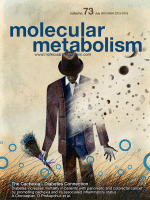
Our lipid metabolism group, led by Toni Petan, along with a strong international and interdisciplinary team of scientists, has recently published a paper in Molecular Metabolism. The manuscript, titled Lipid droplets control mitogenic lipid mediator production in human cancer cells, was made available online in August 2023.
In this study, we examined the trafficking of polyunsaturated fatty acids (PUFAs) between membrane phospholipids and triglycerides stored in lipid droplets. Our aim was to understand how this trafficking mechanism influences the generation of lipid signaling molecules. We discovered that the build-up of triglyceride stores in human cancer cells is required for the production of PUFA-derived eicosanoids. These eicosanoids, in turn, facilitate cancer cell proliferation and tumor growth in vivo. The implications of our findings are particularly noteworthy from two key perspectives. First, we identify the lipid droplet organelle as a pivotal cellular hub that integrates diverse sources of PUFAs—whether derived from lipoproteins, membrane phospholipids, or obtained exogenously. Subsequently, these PUFAs are redirected by LD-resident enzymes into pathways that produce lipid mediators. Secondly, we have uncovered that the conventional pathway involving phospholipase A2-induced production of lipid mediators depends on lipid droplet metabolism. This discovery challenges the prevailing membrane-centric paradigm of lipid mediator production.
Our work bridges the gap between lipid metabolism and mitogenic as well as inflammatory signalling in cancer. Importantly, the mechanisms elucidated in this study hold fundamental significance in human molecular and cell biology, with implications for metabolic and cardiovascular diseases, inflammation, immunity, and beyond.
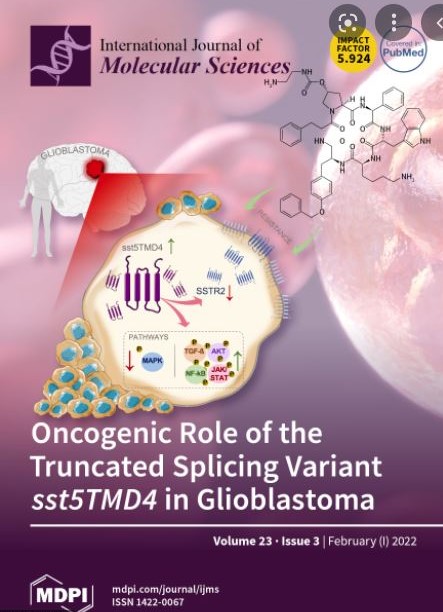
In collaboration with prof. Vito Turk, we prepared a research article entitled: Origin and early diversification of the papain family of cysteine peptidases. The paper by Kordiš, D. and Turk, V. was accepted for publication in International Journal of Molecular Sciences in July 2023.
Peptidases of the papain family play a key role in protein degradation, regulated proteolysis, and the host-pathogen arms race. Although the papain family has been the subject of many studies, knowledge about its diversity, origin, and evolution in Eukaryota, Bacteria, and Archaea is limited; thus, we aimed to answer these long-standing questions. We traced the origin and expansion of the papain family through phylogenomic analysis, using sequence data from numerous prokaryotic and eukaryotic proteomes, transcriptomes, and genomes. We identified the full complement of the papain family in all prokaryotic and eukaryotic lineages. Analysis of the papain family provided strong evidence for its early diversification in the ancestor of eukaryotes. We found that the papain family has undergone complex and dynamic evolution through numerous gene duplications, which produced eight eukaryotic ancestral paralogous C1A lineages during eukaryogenesis. Different evolutionary forces operated on C1A peptidases, including gene duplication, horizontal gene transfer, and gene loss. This study challenges the current understanding of the origin and evolution of the papain family and provides valuable insights into their early diversification. The findings of this comprehensive study provide guidelines for future structural and functional studies of the papain family.
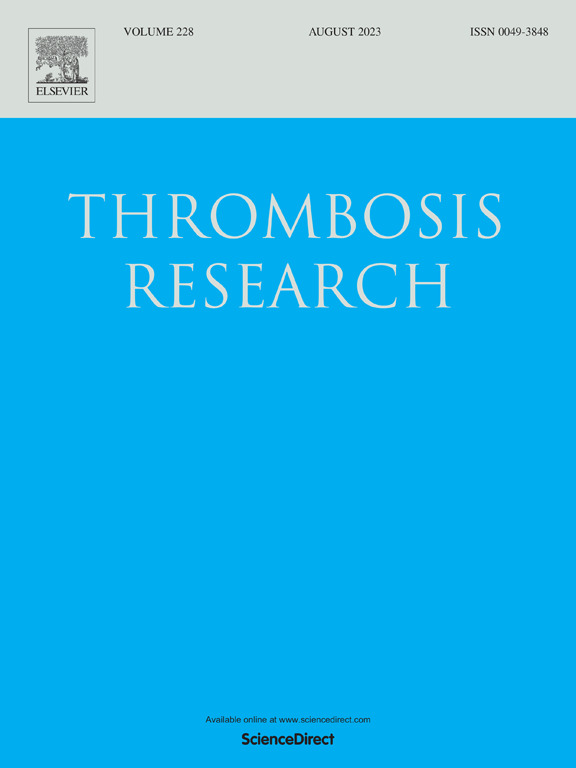
In collaboration with clinicians from the University Medical Centre in Ljubljana and collaborators from the Universities of Ljubljana and Zagreb, we prepared a research article entitled: Reversible and transient thrombocytopenia of functional platelets induced by nose-horned viper venom. The paper by Dobaja-Borak, M., Grenc, D., Reberšek, K., Podgornik, H., Leonardi, A., Kurtović, T., Halassy, B., Križaj, I. and Brvar, M. was accepted for publication in Thrombosis Research in July 2023.
In Slovenia, the nose-horned viper (Vipera a. ammodytes, Vaa) is the most medically important venomous snake, and a Vaa snakebite can result in severe thrombocytopenia. In this clinical study, we evaluated platelet function in nine Vaa-envenomed patients with thrombocytopenia using rotational thromboelastometry and aggregometry assays as well as flow cytometry to assess the expression of P-selectin, a marker of platelet activation, before and after antivenom therapy. We concluded that Vaa envenomation causes profound and transient thrombocytopenia of functional platelets in patients, probably due to their agglutination by the action of Vaa venom components, most likely snake C-type lectins or snaclecs.

Luka Gnidovec, Msc student at FCCT UL and a member of the "Toxins and Biomembranes" Programme Group, will present a seminar entitled Structural aspects of hnRNP H binding to G4C2 hexanucleotide repeats.
Klementina Polanec, Msc student at FCCT UL and a member of the "Toxins and Biomembranes" Programme Group, will present a seminar entitled Analysis of biotin identification targets of ORF1p and optimization of LINE1 retrotransposition assay with vtRNA and YRNA.
The seminars will be held on-line on Thursday June 15, starting at 14:00. Non-members of our Programme Group, who would like to attend the seminar contact Jože Pungerčar (joze.pungercar@ijs.si) to receive a link.
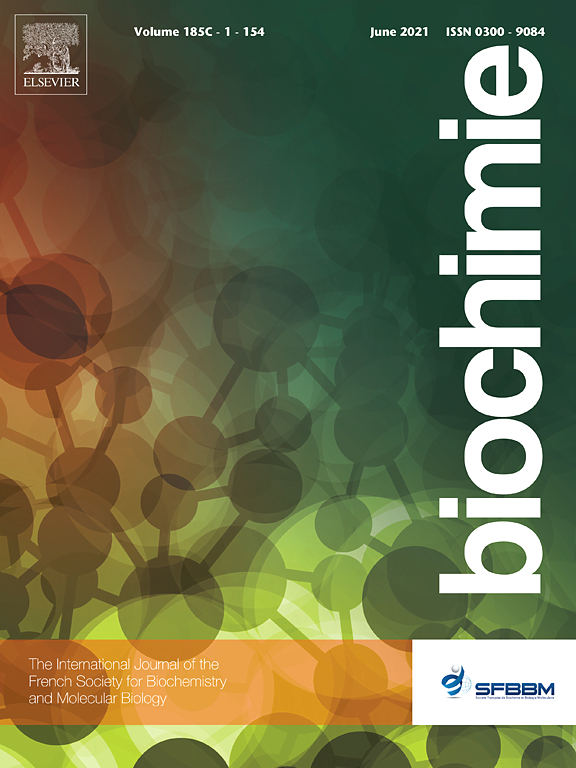
In collaboration with our colleagues from the Biotechnical Faculty, University of Ljubljana, we prepared an interesting study entitled: Proteomics of the haemolymph of the terrestrial crustacean Porcellio scaber reveals components of its innate immunity under baseline conditions. The work by Jemec Kokalj, A.*, Leonardi, A.*, Perc, V., Dolar, A., Drobne, D., and Križaj, I. was accepted for publication in Biochimie in May 2023.
In this study, we analyzed the hemolymph proteome of Porcellio scaber, a terrestrial crustacean that is a well-established test organism in environmental research. Using a classical proteomic approach based on one-dimensional gel electrophoresis, tandem mass spectrometry, publicly available protein databases, and our own P. scaber genome data, we identified 76 proteins involved in cytoskeleton formation, protein degradation, vesicular transport, genetic information processing, detoxification, carbohydrate and lipid metabolism. These proteins reflect hemocyte metabolic activity, active intracellular transport, and intercellular communication. Compared to data reported for other crustaceans, 28 of these P. scaber proteins have been linked to its immunity, providing a solid foundation for studying the innate immune response of P. scaber at the level of the hemolymph proteome. This knowledge is particularly important in ecotoxicity studies involving various environmental stressors, where understanding physiological changes is crucial for revealing possible modes of action.

Veno Kononenko, PhD researcher at the Biotechnical Faculty and a member of the "Toxins and Biomembranes" Programme Group, will present a seminar entitled Gelatin nanoparticles-loaded with analog of marine toxin 3-alkylpyridinium salt APS7: a promising support in human lung cancer therapy.
The seminar will be held on-line on Thursday May 18, starting at 14:00. Non-members of our Programme Group, who would like to attend the seminar contact Jože Pungerčar (joze.pungercar@ijs.si) to receive a link.

Špela Koren, PhD student at the Jožef Stefan Institute and a member of the "Toxins and Biomembranes" Programme Group, will present a seminar entitled Lipid trafficking and oxidation under ferroptic conditions: A lipidomic approach.
Larisa Lara Popošek, PhD student at the Biotechnical Faculty and a member of the "Toxins and Biomembranes" Programme Group, will present a seminar entitled The quest for new lipid-binding proteins and biotechnological applications.
The seminars will be held on-line on Thursday April 20, starting at 14:00. Non-members of our Programme Group, who would like to attend the seminar contact Jože Pungerčar (joze.pungercar@ijs.si) to receive a link.

Alenka Vesel, MSc student at the Biotechnical Faculty and a member of the "Toxins and Biomembranes" Programme Group, will present a seminar entitled Interaction of recombinant proteins Cry34Ab1 and Cry35Ab1 from bacteria Bacillus thuringiensis with artificial lipid membranes.
Adrijan Ivanušec, PhD student at the Jožef Stefan Institute and a member of the "Toxins and Biomembranes" Programme Group, will present a seminar entitled Group IIA secreted phospholipase A2 and Alzheimer’s disease?
The seminars will be held on-line on Thursday March 16, starting at 14:00. Non-members of our Programme Group, who would like to attend the seminar contact Jože Pungerčar (joze.pungercar@ijs.si) to receive a link.

Tadeja Bele, PhD student at the Jožef Stefan Institute and Biotechnical Faculty and a member of the "Toxins and Biomembranes" Programme Group, will present a seminar entitled Antagonists of α7-nicotinic acetylcholine receptor and their potential therapeutic effects on lung cancer cells.
Kity Požek, PhD student at the Jožef Stefan Institute and a member of the "Toxins and Biomembranes" Programme Group, will present a seminar entitled Advancement on the study of thrombocytopenia-inducing Vaa-snaclec-3/2 from the venom of the nose-horned viper.
The seminars will be held on-line on Thursday February 16, starting at 13:00. Non-members of our Programme Group, who would like to attend the seminar contact Jože Pungerčar (joze.pungercar@ijs.si) to receive a link.
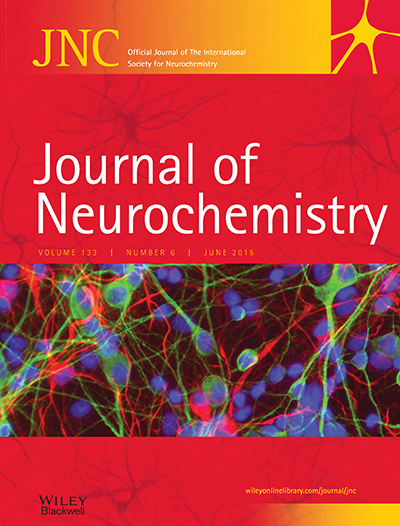
In consortium, led by Professor Cesare Monteccucco from the Dept. of Biomedical Sciences, University of Padova and the Institute of Neuroscience, National Research Council, Padova, Italy, we participated at preparing a research paper entitled: An agonist of CXCR4 induces a rapid recovery from the neurotoxic effects of Vipera ammodytes and Vipera aspis venoms. The paper by M. Stazi, A. Megighian, G. D’Este, S. Negro, A. Ivanušec, D. Lonati, M. Pirazzini, M., I. Križaj, I. and C. Montecucco was accepted for publication in the Journal of Neurochemistry in February 2023.
Those who have been bitten by Alpine vipers are usually treated with antivenom antisera to prevent the noxious consequences caused by the injected venom. However, this treatment suffers from a number of drawbacks and additional therapies are necessary. The venoms of Vipera ammodytes and of Vipera aspis are neurotoxic and cause muscle paralysis by inducing neurodegeneration of motor axon terminals because they contain a presynaptic acting sPLA2 neurotoxin.
It has been recently found that any type of damage to motor axons is followed by the expression and activation of the intercellular signaling axis consisting of the CXCR4 receptor present of the membrane of the axon stump and of its ligand, the chemokine CXCL12 released by activated terminal Schwan cells. We show in this work that also Vipera ammodytes and Vipera aspis venoms cause the expression of the CXCL12-CXCR4 axis. We also demonstrate that a small molecule agonist of CXCR4, dubbed NUCC-390, induces a rapid regeneration of the motor axon terminal with functional recovery of the neuromuscular junction. These findings qualify NUCC-390 as a promising novel therapeutics capable of improving the recovery from the paralysis caused by the snakebite of the two neurotoxic Alpine vipers.

Neža Repar, PhD researcher at the Biotechnical Faculty and a member of the "Toxins and Biomembranes" Programme Group, will present a seminar entitled Developing a model to test microplastic impact on lung epithelial barriers formation and functionality.
Maja Hostnik, PhD student at the Biotechnical Faculty and a member of the "Toxins and Biomembranes" Programme Group, will present a seminar entitled Phage GIL01 influence on Bacillus thuringiensis sporulation.
The seminars will be held on-line on Thursday January 19, starting at 14:00. Non-members of our Programme Group, who would like to attend the seminar contact Jože Pungerčar (joze.pungercar@ijs.si) to receive a link.

The review paper Mass spectrometry in snake venom research (Masna spektrometrija v raziskavah kačjih strupov) by Adrijana Leonardi has been published in the Acta Biologica Slovenica on December 2022.
Snake venoms are complex mixtures of biologically active proteins and peptides that have evolved over the course of evolution into one of the most lethal natural weapons. Mass spectrometry enables rapid and reliable identification and characterization of proteins and peptides. Snake venom proteomics or snake venomics is primarily based on mass spectrometry, which allows qualitative and quantitative analysis of venom components. Venomics is important for understanding the biology of snake venoms, their evolution and, most importantly, their clinical effects, and for finding approaches for the development of antivenoms. In this paper, we provide an overview of the current state of venomic research, focusing on the medically important European vipers, the long-nosed viper (Vipera a. ammodytes) and the adder (Vipera b. berus), as well as the meadow viper (Vipera ursinii), the most threatened snake species in Europe. Mass spectrometry is also a very useful tool for characterizing antivenoms (antivenomics) to determine their specificity and neutralising power.
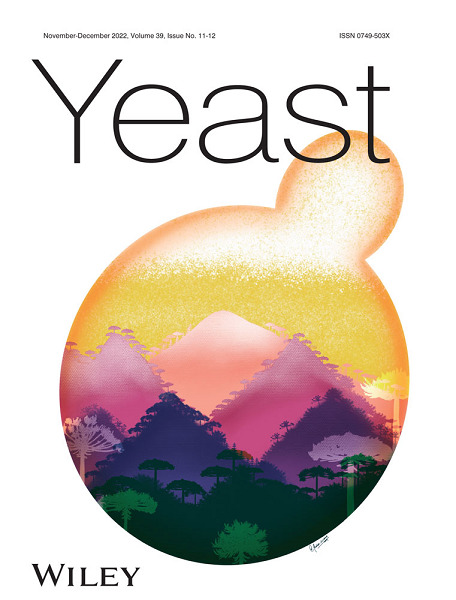
The Yeast group of the Department published a research paper Construction and evaluation of gRNA arrays for multiplex CRISPR-Cas9. The paper by Gašper Žun, Katja Doberšek and Uroš Petrovič has been published in the Yeast journal on December 2022.
CRISPR-Cas9 technology provides a powerful toolbox for genome editing and engineering also in the yeast Saccharomyces cerevisiae. The goal of this study was to evaluate precise targeting of multiple genomic loci simultaneously. BioBrick approach was used to construct an array of independently expressing gRNAs from a single plasmid. We designed multiplex CRISPR-Cas9 system for targeting 6 marker genes and evaluated the performance of the gRNA array. We successfully introduced up to 5 simultaneous perturbations within single cells of yeast S. cerevisiae using this multiplex CRISPR-Cas9 system. The novelty of our approach is the sequential BioBrick assembly with the capability to accommodate many highly similar gRNA-expression cassettes, and the main contribution of the study to the rapidly evolving field of CRISPR-Cas9-based methods is an exhaustive evaluation of the performance of multiple gRNAs within a single cell.

Kity Požek, PhD student at the Jozef Stefan Institute and a member of the "Toxins and Biomembranes" Programme Group, will present a seminar entitled Serine protease VaaSP-6 from the nose-horned viper venom and its effect on blood coagulation.
The seminar will be held on-line on Thursday December 15, starting at 13:00. Non-members of our Programme Group, who would like to attend the seminar contact Jože Pungerčar (joze.pungercar@ijs.si) to receive a link.

Katja Doberšek, MSc student at JSI; Tina Zavodnik, MSc student at JSI; Gašper Žun, PhD student at JSI; Mauro Danielli, Postdoc. Assoc. at JSI, will present a seminar entitled SARS-CoV-2 ORF8 protein's human protein interactors and covid-19 pathology.
The seminar will be held on-line on Thursday November 20, starting at 14:00. Non-members of our Programme Group, who would like to attend the seminar contact Jože Pungerčar (joze.pungercar@ijs.si) to receive a link.

Anja Pavlin, PhD student at the Biotechnical Faculty and a member of the "Toxins and Biomembranes" Programme Group, will present a seminar entitled Gp1: A novel repressor of the temperate phage GIL01 lytic cycle.
Leja Perne, Master student at the Jozef Stefan Institute and a member of the "Toxins and Biomembranes" Programme Group, will present a seminar entitled Lipid droplets and the regulation of ferroptosis in cancer cells.
The seminars will be held on-line on Thursday October 20, starting at 14:00. Non-members of our Programme Group, who would like to attend the seminar contact Jože Pungerčar (joze.pungercar@ijs.si) to receive a link.

In collaboration with the Medical Faculty of the University of Ljubljana, we prepared a research paper entitled: Rat Group IIA Secreted Phospholipase A2 Binds to Cytochrome c Oxidase and Inhibits its Activity: A Possible Episode in the Development of Alzheimer’s Disease. The paper by Adrijan Ivanušec, Jernej Šribar, Adrijana Leonardi, Maja Zorovič, Marko Živin and Igor Križaj was accepted for publication in the International Journal of Molecular Sciences in October 2022.
Alzheimer’s disease (AD), a progressive form of dementia, is characterized by the increased expression of secreted phospholipase A2 group IIA (GIIA) in the affected tissue and the dysfunction of neuronal mitochondria, similar to that induced by an orthologous GIIA from snake venom, β-neurotoxic ammodytoxin (Atx), in the motor neurons. To advance our knowledge about the role of GIIA in AD, we studied the effect of rat GIIA on the neuronal mitochondria and compared it with that of the Atx. We produced recombinant rat GIIA (rGIIA) and its enzymatically inactive mutant, rGIIA(D49S), and demonstrated that they interact with the subunit II of cytochrome c oxidase (CCOX-II) as Atx. rGIIA and rGIIA(D49S) bound to this essential constituent of the respiratory chain complex with an approximately 100-fold-lower affinity than Atx; nevertheless, both rGIIA molecules potently inhibited the CCOX activity in the isolated rat mitochondria. Like Atx, rGIIA was able to reach the mitochondria in the PC12 cells from the extracellular space, independent of its enzymatic activity. Consistently, the inhibition of the CCOX activity in intact PC12 cells and in the rat’s brain tissue sections was clearly demonstrated using rGIIA(D49S). Our results show that the effects of mammalian and snake venom β-neurotoxic GIIA on the neuronal mitochondria have similar molecular backgrounds. They suggest that the elevated extracellular concentration of GIIA in the AD tissue drives the translocation of this enzyme into local neurons and their mitochondria to inhibit the activity of the CCOX in the respiratory chain. Consequently, the process of oxidative phosphorylation in the neurons is attenuated, eventually leading to their degeneration. Atx was thus revealed as a valuable molecular tool for further investigations of the role of GIIA in AD.

Gašper Žun, PhD student at BF and JSI and a member of the "Toxins and Biomembranes" Programme Group, will present a seminar entitled Highlights of CRISPR-Cas9 in yeast Saccharomyces cerevisiae. The seminar will be held online on Thursday, September 22, starting at 14:00. Non-members of our Programme Group, who would like to attend the seminar contact Jože Pungerčar (joze.pungercar@ijs.si) to receive a link.
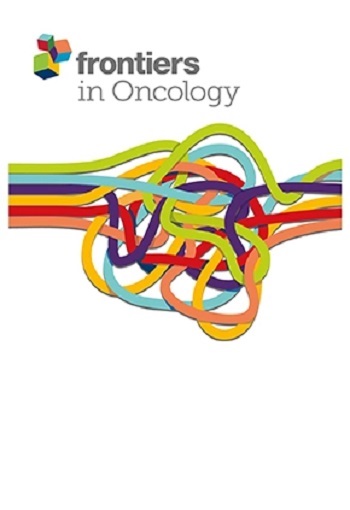
The result of collaboration with the colleagues from the National Institute of Biology, Ljubljana, is a review paper entitled: Bioactive peptides from venoms against glioma progression. The paper by Bernarda Majc, Metka Novak, Tamara T. Lah and Igor Križaj was accepted for publication in Frontiers in Oncology in August 2022.
In our paper, we describe bioactive peptides from venoms that have been found to affect hallmarks of cancer, such as cell proliferation, cell invasion and cell migration, and can also modulate the immune response of normal and cancer-bearing organisms. We review the mechanisms of action on these cancer cell features, focusing on bioactive peptides being developed as potential therapeutics for one of the most aggressive and deadly brain tumors, glioblastoma (GB). Various molecular targets related to the effects of bioactive peptides on GB have been proposed, including ion channels, integrins, membrane phospholipids and even immunomodulatory treatment of GB. In addition to therapy, some bioactive peptides, such as disintegrins, can also be used for diagnostics or are used as labels for cytotoxic drugs to specifically target cancer cells. Combined approaches of added bioactive peptides to standard cancer therapies that are explored using advanced GB in vitro models such as organoids are presented as well as new methods to enhance translation from research to practice and provide new hope for GB patients.

Klavdija Fortuna, PhD student at the Biotechnical Faculty and a member of the "Toxins and Biomembranes" Programme Group, will present a seminar entitled Bioinsecticidal potential of aegerolysin proteins from mushrooms of the genus Pleurotus and their mutants.
Ana Maklin, Master student at the Faculty of Chemistry and Chemical Technology and a member of the "Toxins and Biomembranes" Programme Group, will present a seminar entitled The influence of Sig-1R on aggregation of TDP-43 in neurodegeneration.
Jerneja Nimac, Master student at the Faculty of Chemistry and Chemical Technology and a member of the "Toxins and Biomembranes" Programme Group, will present a seminar entitled Protein interactions of human MATR3.
The seminars will be held on-line on Thursday June 16, starting at 14:00. Non-members of our Programme Group, who would like to attend the seminar contact Igor Križaj (igor.krizaj@ijs.si) to receive a link.

In collaboration with our colleagues from the Faculty of Electrical Engineering and the Medical Faculty of the University of Ljubljana, the National Institute of Chemistry and the Jožef Stefan Institute, we prepared a research article entitled: The relevance of physico-chemical properties and protein corona for evaluation of nanoparticles immunotoxicity – in vitro correlation analysis on THP-1 macrophages. The paper by Pavlin, M., Lojk, J., Strojan, K., Hafner-Bratkovič, I., Jerala, R., Leonardi, A., Križaj, I., Drnovšek, N., Novak, S., Veranič, P. and Bregar, V.B. was accepted for publication in the International Journal of Molecular Sciences in May 2022.
Alongside physiochemical properties (PCP), it has been suggested that the protein corona of nanoparticles (NPs) plays a crucial role in the response of immune cells to NPs. However, due to the great variety of NPs, target cells and exposure protocols, there is still no clear relationship between PCP, protein corona composition and immunotoxicity of NPs. In this study, we correlated PCP and protein corona composition of NPs to THP-1 macrophages response, focusing on selected toxicological endpoints: cell viability, reactive oxygen species (ROS), cytokine secretion. We analyzed seven commonly used engineered NPs (SiO2, silver, TiO2) and magnetic NPs. We show that with the exception of silver NPs, all tested TiO2 types and SiO2 exhibited moderate toxicity and transient inflammatory response that was observed as an increase in ROS, IL-8 and/or IL-1β cytokine secretion. We observed strong correlation between size of NPs in media and IL-1β secretion. The induction of IL-1β secretion was completely blunted in NLR family pyrin domain containing 3 (NLRP3) knockout THP-1 cells, indicating activation of the inflammasome. The correlations analysis also implicates association of specific NP corona proteins with the induction of cytokine secretion. This study provides new insights towards better understanding of the relationships between PCP, protein corona and inflammatory response of macrophages for different engineered NPs, to which we are exposed on daily bases.

In collaboration with the Medical Faculty of the University of Ljubljana, we prepared a research article entitled: The phospholipase activity of ammodytoxin, a prototype snake venom β-neurotoxin, is not obligatory for cell internalisation and translocation to mitochondria. The paper by Adrijan Ivanušec, Jernej Šribar, Peter Veranič and Igor Križaj was accepted for publication in Toxins in May 2022.
β-Neurotoxins are secreted phospholipases A2 that inhibit transmission in neuromuscular synapses by poisoning the motoneurons. These toxins specifically and rapidly internalise into the nerve endings of motoneurons. Ammodytoxin (Atx) is a prototype β-neurotoxin from the venom of the nose-horned viper (Vipera ammodytes ammodytes). Here, we studied the relevance of the enzymatic activity of Atx in cell internalisation and subsequent intracellular movement using transmission electron microscopy (TEM). We prepared a recombinant enzymatically inactive mutant of Atx, Atx(D49S), labelled with gold nanoparticles (GNP), and incubated this with PC12 cells, to analyse its localisation by TEM. Atx(D49S)-GNP internalised into the cells. Inside the cells, Atx(D49S)-GNP was detected in different vesicle-like structures, cytosol, endoplasmic reticulum and mitochondria, where it was spotted in the intermembrane space and matrix. Co-localization of fluorescently labelled Atx(D49S) with mitochondria in PC12 cells by confocal fluorescence microscopy confirmed the reliability of results generated using Atx(D49S)-GNP and TEM and allowed us to conclude that the phospholipase activity of Atx is not obligatory for its cell internalisation and translocation into the mitochondrial intermembrane space and matrix.

Mia Žganjar, PhD student at the Biotechnical Faculty and the Jožef Stefan Institute and a member of the "Toxins and Biomembranes" Programme Group, will present a seminar entitled Wild yeast selection and identification for microbial oils production from short-chain fatty acids (SCFAs).
Klavdija Fortuna, PhD student at the Biotechnical Faculty and a member of the "Toxins and Biomembranes" Programme Group, will present a seminar entitled Bioinsecticidal potential of aegerolysin proteins from mushrooms of the genus pleurotus and their mutants. The seminars will be held on-line on Thursday May 19, starting at 14:00. Non-members of our Programme Group, who would like to attend the seminar contact Igor Križaj (igor.krizaj@ijs.si) to receive a link.

Larisa Lara Popošek, PhD student at the Biotechnical Faculty and a member of the "Toxins and Biomembranes" Programme Group, will present a seminar entitled The quest for new lipid-binding proteins and biotechnological applications.
Adrijan Ivanušec, PhD student at the Jožef Stefan Institute and a member of the "Toxins and Biomembranes" Programme Group, will present a seminar entitled Interaction between secreted phospholipases A2 and mitochondria. The seminars will be held on-line on Thursday April 21, starting at 14:00. Non-members of our Programme Group, who would like to attend the seminar contact Igor Križaj (igor.krizaj@ijs.si) to receive a link.

In collaboration with researchers from the University of Denmark, the Nanjing Agricultural University, the Beijing Genomics Institute-Research, the University Medical Center in Ljubljana and the University of Ljubljana, we prepared a research article entitled: Genomic confirmation of the P-IIIe subclass of snake venom metalloproteinases and characterization of its first member, a disintegrin-like/cysteine-rich protein. The paper by Požek, K.†, Leonardi, A.†, Pungerčar, J.†, Rao, W., Gao, Z., Liu, S., Laustsen, A.H., Trampuš Bakija, A., Reberšek, K., Podgornik, H. and Križaj, I. was accepted for publication in Toxins in March 2022.
Disintegrin-like/cysteine-rich (DC) proteins have long been regarded just as products of proteolysis of P-III snake venom metalloproteinases (SVMPs). In this work, we demonstrated that a DC protein from the venom of Vipera ammodytes (Vaa; nose-horned viper), VaaMPIII-3, is encoded per se by a P-III SVMP-like gene that has a deletion in the region of the catalytic metalloproteinase domain and in part of the non-catalytic disintegrin-like domain. We thus justified our previous proposal of the introduction of a new subclass P-IIIe of SVMP-derived DC proteins. We purified VaaMPIII-3 from the venom and thoroughly characterized it. Further, we constructed a three-dimensional homology model of VaaMPIII-3 from which it is evident that both Cys6 and Cys19 can pair with Cys26. This suggests that the intramolecular thiol-disulphide exchange might regulate some of its activities, for example, inhibition of collagen-, ADP- or arachidonic-acid-induced platelet aggregation.

Veno Kononenko, PhD researcher at the Biotechnical Faculty and a member of the "Toxins and Biomembranes" Programme Group, will present a seminar entitled Testing nAChR antagonists and nanodelivery systems for the development of a novel lung cancer treatment strategy.
Tadeja Bele, PhD student at the Jožef Stefan Institute and Biotechnical Faculty and a member of the "Toxins and Biomembranes" Programme Group, will present a seminar entitled Effects of selected α7-nicotinic acetylcholine receptor antagonists on lung cancer cells. The seminars will be held on-line on Thursday March 17, starting at 14:00. Non-members of our Programme Group, who would like to attend the seminar contact Igor Križaj (igor.krizaj@ijs.si) to receive a link.
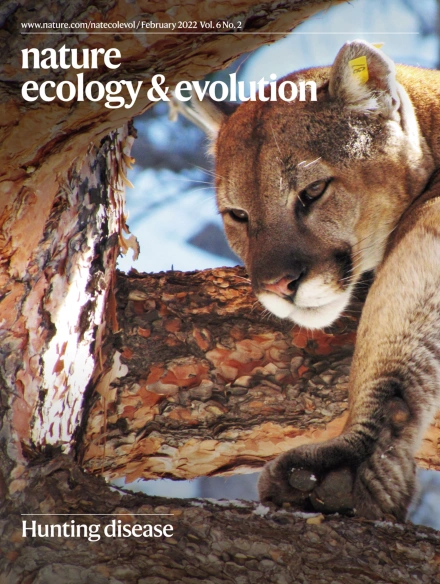
In collaboration of research teams from France, Sweden, Italy and Slovenia, we participated at the work entitled: Domestication reprogrammed the budding yeast life cycle. The manuscript by De Chiara, M., Barré, B.P., Persson, K., Irizar, A., Vischioni, C., Khaiwal, S., Stenberg, S., Chioma Amadi, O., Žun, G., Doberšek, K., Taccioli, C., Schacherer, J., Petrovič, U., Warringer, J. and Liti, G. was accepted for publication in a prestigious journal Nature Ecology and Evolution in February 2022.
Domestication of wild organisms enabled the emergence of the human civilisation as we know it. The process of domestication, however, profoundly changed also the biology of the domesticated species. In this study, we investigated the effect of domestication on the yeast Saccharomyces cerevisiae, which has been used by humans for millennia, and is also a prime model organism in biological research. We found a remarkable dichotomy between domesticated and wild strains in the capacity for sexual reproduction and growth under different conditions. We determined the genetic origins of the domesticated yeast traits at the level of individual DNA nucleotides, and, importantly, confirmed that these traits can be reversed using genome editing; genome editing using the CRISPR-Cas technology was the main contribution of the research group from JSI to this study. We concluded that domestication has been the most dramatic event in budding yeast evolution, which has many implications for our understanding of the natural biology of this key model organism.

Špela Koren, PhD student at the Jozef Stefan Institute and a member of the "Toxins and Biomembranes" Programme Group, will present a seminar entitled Autophagy is involved in lipid droplet breakdown in serum-starved breast cancer cells.
Ana Kump, PhD student at the Jozef Stefan Institute and a member of the "Toxins and Biomembranes" Programme Group, will present a seminar entitled Lipid droplets modulate ferroptosis sensitivity in cancer cells. The seminars will be held on-line on Thursday February 17, starting at 14:00. Non-members of our Programme Group, who would like to attend the seminar contact Igor Križaj (igor.krizaj@ijs.si) to receive a link.

Maja Hostnik, PhD student at the Biotechnical Faculty and a member of the "Toxins and Biomembranes" Programme Group, will present a seminar entitled A method for targeting a specified segment of DNA to a bacterial microcompartment.
Anja Pavlin, PhD student at the Biotechnical Faculty and a member of the "Toxins and Biomembranes" Programme Group, will present a seminar entitled Small bacteriophage protein determines hierarchy over coresidential jumbo phage and influences its host biology. The seminars will be held on-line on Thursday January 20, starting at 14:00. Non-members of our Programme Group, who would like to attend the seminar contact Igor Križaj (igor.krizaj@ijs.si) to receive a link.
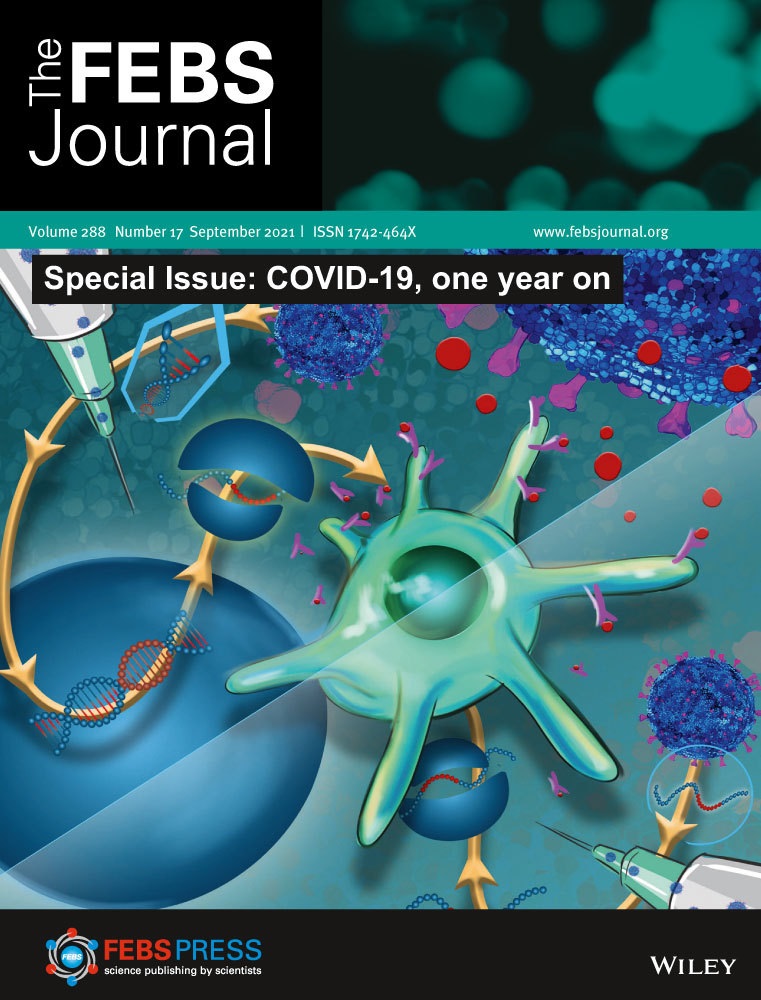
We wrote a review paper entitled: Serine pseudoproteases in physiology and disease. The paper by Zupanič, N., Počič, J., Leonardi, A., Šribar, J., Kordiš, D. and Križaj, I. was accepted for publication in FEBS Journal in January 2022.
Serine proteases (SPs) constitute a very important family of enzymes, both physiologically and pathologically. The reason for the effects produced by these proteins has been explained by their proteolytic activity. However, the discovery of pharmacologically active SP molecules that show no enzymatic activity, as the so-called pseudo SPs or SP homologs (SPHs), has exposed a profoundly neglected possibility of nonenzymatic functions of these SP molecules. In our review, we present the most thoroughly described SPHs. The main physiological domains where SPHs operate appear to be in reproduction, embryonic development, immune response, host defense, and hemostasis. Hitherto unexplained actions of SPs have therefore to be considered also as the result of the ligand-like attributes of SPs. The gain of a novel function by an SPH is a consequence of specific amino acid replacements that have resulted in a novel interaction interface or a ʹcatalytic trapʹ. Unravelling the SP/SPH interactome is the way towards a description of the novel physiological functions of SPs/SPHs, to create innovative medical approaches.

Maida Jusović, PhD student at JSI and a member of the "Toxins and Biomembranes" Programme Group, will present a seminar entitled Autophagy-Driven Lipid Droplet Formation Protects Cancer Cells from Nutrient Stress.
Mauro Danielli, PhD researcher at JSI and a member of the "Toxins and Biomembranes" Programme Group, will present a seminar entitled Interplay Between Autophagy and Lipolysis in Cancer Cells during Nutrient Stress. The seminars will be held on-line on Thursday December 16, starting at 12:00. Non-members of our Programme Group, who would like to attend the seminar contact Igor Križaj (igor.krizaj@ijs.si) to receive a link.
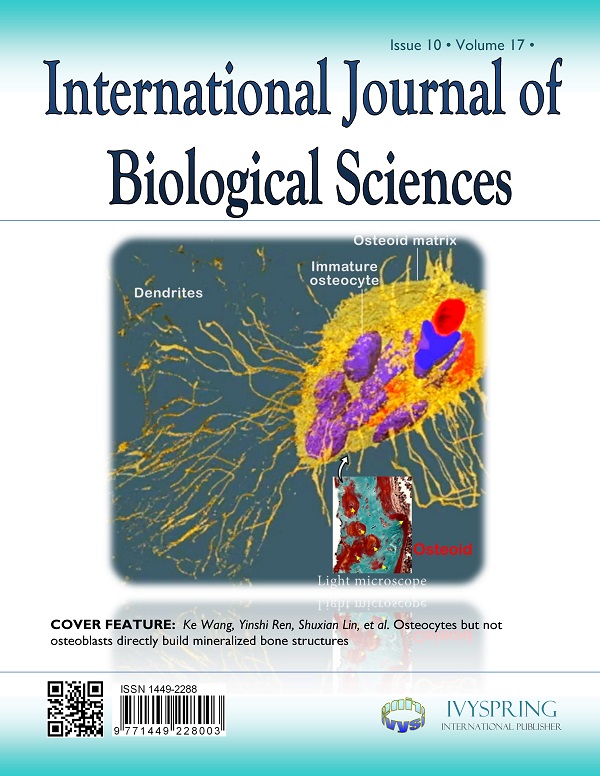
We published a review paper entitled: Secreted Phospholipases A2 – not just Enzymes: Revisited. The paper by Ivanušec, A., Šribar, J. and Križaj, I. was accepted for publication in International Journal of Biological Sciences in December 2021.
Secreted phospholipases A2 (sPLA2s) participate in a very broad spectrum of biological processes through their enzymatic activity and as ligands for membrane and soluble receptors. The physiological roles of sPLA2s as enzymes have been very well described, while their functions as ligands are still poorly known. Since the last overview of sPLA2-binding proteins (sPLA2-BPs) ten years ago, several important discoveries have occurred in this area. New and more sensitive analytical tools have enabled the discovery of additional sPLA2-BPs, which are presented and critically discussed in our paper. The structural diversity of sPLA2-BPs reveals sPLA2s as very promiscuous proteins, and we offer some structural explanations for this nature that makes these proteins evolutionarily highly advantageous. Three areas of physiological engagement of sPLA2-BPs have appeared most clearly: cellular transport and signalling, and regulation of the enzymatic activity of sPLA2s. Due to the multifunctionality of sPLA2s, they appear to be exceptional pharmacological targets. We reveal the potential to exploit interactions of sPLA2s with other proteins in medical terms, for the development of original diagnostic and therapeutic procedures. We conclude this survey by suggesting the priority questions that need to be answered.
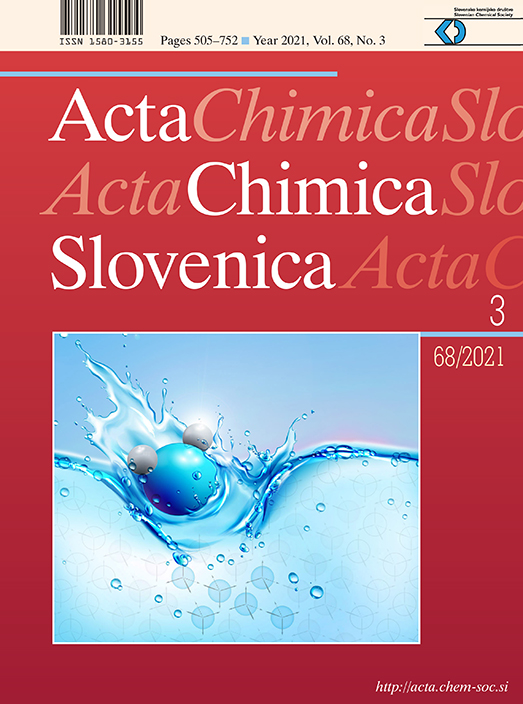
In collaboration with the colleagues from the Faculty of Electrical Engineering, University of Ljubljana, we published a review paper entitled: The good and the bad of cell membrane electroporation. The paper by Balantič, K., Miklavčič, D., Križaj, I. and Kramar, P. was accepted for publication in Acta Chimica Slovenica in November 2021.
Electroporation is used to increase the permeability of the cell membrane through high-voltage electric pulses. Nowadays, it is widely used in different areas, such as medicine, biotechnology, and the food industry. Electroporation induces the formation of hydrophilic pores in the lipid bilayer of cell membranes, to allow the entry or exit of molecules that cannot otherwise cross this hydrophobic barrier. In this article, we critically review the basic principles of electroporation, along with the advantages and drawbacks of this method. We discuss the effects of electroporation on the key components of biological membranes, as well as the main applications of this procedure in medicine, such as electrochemotherapy, gene electrotransfer, and tissue ablation. Finally, we define the most relevant challenges of this promising area of research.

Neža Repar, PhD student at the Biotechnical Faculty and a member of the "Toxins and Biomembranes" Programme Group, will present a seminar entitled The protective role of oleic acid is not related to its incorporation into lipid droplets in HUVEC cells treated with superparamagnetic iron oxide nanoparticles (SPIONs).
Anastasija Panevska, PhD researcher at Biotechnical Faculty and a member of the "Toxins and Biomembranes" Programme Group, will present a seminar entitled The story of ostreolysin A6 and what is next. The seminars will be held on-line on Thursday November 18, starting at 14:00. Non-members of our Programme Group, who would like to attend the seminar contact Igor Križaj (igor.krizaj@ijs.si) to receive a link.

Anže Lovše, Master's degree student at the Biotechnical Faculty and a member of the "Toxins and Biomembranes" Programme Group, will present a seminar entitled Small bacteriophage protein acts as a master regulator of expression in Bacillus thuringiensis serovar israelensis.
Nina Zupanič, PhD researcher at JSI and a member of the "Toxins and Biomembranes" Programme Group, will present a seminar entitled Advancements on the study of VaaSPH-1 towards development of the first intrinsic tenase inhibitor-based drug for treatment of venous thrombosis. The seminars will be held on-line on Thursday October 21, starting at 14:00. Non-members of our Programme Group, who would like to attend the seminar contact Igor Križaj (igor.krizaj@ijs.si) to receive a link.

Kity Požek, M.Sc., a member of the "Toxins and Biomembranes" Programme Group, will present a seminar entitled Advancement on VaaMPIII-3, a disintegrin-like/cysteine-rich protein from the venom of Vipera a. ammodytes.
Aljoša Marinko, Master's degree student at JSI and a member of the "Toxins and Biomembranes" Programme Group, will present a seminar entitled Recombinant protein expression of VaaCRISP-1, a cysteine-rich secretory protein isoform from the venom of nose-horned viper. The seminars will be held on-line on Thursday September 23, starting at 14:00. Non-members of our Programme Group, who would like to attend the seminar contact Igor Križaj (igor.krizaj@ijs.si) to receive a link.
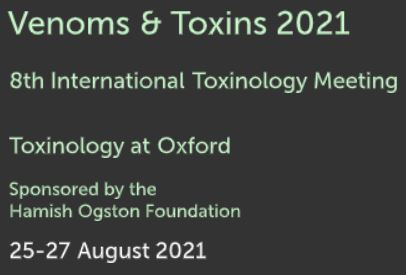
We again very successfully presented our results internationally. At the 8th Oxford Venoms and Toxins Meeting, organized virtually between 25th and 27th August 2021, we received awards for both our posters. The first work was authored by Kity Požek, Adrijana Leonardi, Milan Kojić and Igor Križaj. The work entitled: “Production and characterization of recombinant VaaMPIII-3, a disintegrin like/cysteine rich protein from Vipera a. ammodytes venom” was presented by Kity Požek, our master’s degree student. The second work was made by Adrijan Ivanušec, Jernej Šribar, Peter Veranič, Maja Zorovič, Marko Živin and Igor Križaj. The work entitled: “Mammalian secreted phospholipase A2 group IIA binds to the same mitochondrial receptor as its β-neurotoxic orthologue from snake venom” was, presented by Adrijan Ivanušec, our PhD student.
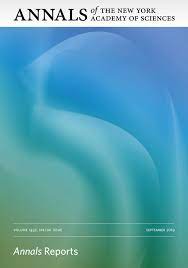
The perspective paper Towards the massive genome of Proteus anguinus, illuminating longevity, regeneration, convergent evolution and metabolic disorders by Kostanjšek, R., Diderichsen, B., Recknagel, H., Gunde-Cimerman, N., Gostinčar, C., Fan, G., Kordiš, D., Trontelj, P., Jiang, H., Bolund L. and Luo, Y., describes the scientific and biomedical rationale for deciphering the cave salamander genome, and was accepted for publication in the Annals of the New York Academy of Sciences in August 2021.
The cave salamander Proteus anguinus (Urodela: Proteidae), also known as olm, is an example of a species with exceptional morphological and physiological adaptations to the subterranean environment, with regenerative abilities, resistance to prolonged starvation, and a lifespan of more than 100 years. However, the structure and sequence of its genome is still largely unknown due to its enormous size, estimated at nearly 50 Gb. A Proteus Genome Research Consortium (http://proteusgenome.com) has been established to tackle the challenge of sequencing the olm genome and transcriptome. Pilot data from the crude genome sequence and preliminary transcriptome sequence data from several tissues have since been obtained. Sequencing is now entering the next phase with single-molecule real-time sequencing as well as short-read sequencing and transcriptome sequencing. We expect that even before the chromosome-level assembly of the genome is achieved, these data can be analyzed to provide novel insights into the surprising biological, developmental, and evolutionary features of this cave dwelling salamander. We also expect that these insights will have important implications for improving human health and will advance medical progress in fields such as aging, regeneration, and metabolic disorders.
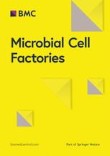
Our yeast genetics group under the leadership of Uroš Petrovič, in a fruitful collaboration with the group of Dr Klaus Natter from University Graz, published a paper Engineering of Saccharomyces cerevisiae for the accumulation of high amounts of triacylglycerol in Microbial Cell Factories in July 2021.
Following the successfully completed Slovenian-Austrian project “Crosstalk between lipid and central carbon metabolism”, in this study we used traditional metabolic engineering approach to increase lipid storage in yeast Saccharomyces cerevisiae cells. With the combination of six specific mutations in a S. cerevisiae segregant with a relatively high starting lipid storage capacity, we achieved a triacylglycerol content of 65% in the dry biomass – a record high for this species. High lipid levels were obtained under conditions that favor lipid accumulation, as well as in standard defined carbon-limited media. In biotechnology, where lipid-based substances are desired for products from food supplements to pharmaceutical products and biofuels, S. cerevisiae is usually regarded as inefficient in lipid storage. This study demonstrated that also this most often used yeast species in biotechnology can be converted into a highly oleaginous strain, which can be extremely useful in bioprocesses for lipid-based products. This study also emphasized the importance of strain selection in combination with metabolic engineering to obtain high product levels.

In collaboration with the colleagues from the Veterinary Faculty, University of Ljubljana, we published a paper entitled: Insect protein-based diet as potential risk of allergy in dogs (Animals 11, 1942; https://doi.org/10.3390/ani11071942).
In the work, Premrov Bajuk, B., Zrimšek, P., Kotnik, T., Leonardi, A., Križaj, I. and Jakovac Strajn B. analyzed possible problems of using edible insects as an alternative source of protein and fat in food/feed formulations. Yellow mealworm (Tenebrio molitor) larvae are rich in protein and other nutrients. Since insects are related to mites, a common allergenic species in dogs, they investigated the interaction between mealworm proteins and the immune system of allergic dogs sensitized to storage mites. Using Western blot analysis, they confirmed the binding of IgEs from canine sera to mealworm proteins. With mass spectrometry analysis, they identified several T. molitor proteins, which are known as human allergens. The results of the study raised the possibility that dogs allergic to mites clinically show cross-reactivity to mealworm proteins.

Mojca Dobaja Borak, PhD student at MF and JSI and a member of the "Toxins and Biomembranes" Programme Group, will present a seminar entitled Isolation and characterization of proteins from Vipera ammodytes ammodytes (Vaa) venom that induce transient and reversible thrombocytopenia of functional platelets.
Gašper Žun, PhD student at BF and JSI and a member of the "Toxins and Biomembranes" Programme Group, will present a seminar entitled Finding sources and their inheritance of salt tolerance as a polygenic trait. The seminars will be held on-line on Thursday June 17, starting at 14:00. Non-members of our Programme Group, who would like to attend the seminar contact Igor Križaj (igor.krizaj@ijs.si) to receive a link.
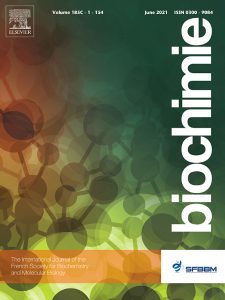
In collaboration with the French colleagues from Université Côte d’Azur, CNRS, Institut de Pharmacologie Moléculaire et Cellulaire, Valbonne Sophia Antipolis, we prepared a review paper, an interesting contribution in combat against viral infections entitled: What do secreted phospholipases A2 have to offer in combat against viruses? The paper by Pungerčar, J., Bihl, F., Lambeau, G. and Križaj, I. was accepted for publication in Biochimie in May 2021.
Secreted phospholipases A2 (sPLA2s) form a widespread group of structurally-related enzymes that catalyse the hydrolysis of the sn-2 ester bond of glycerophospholipids to produce free fatty acids and lysophospholipids. In humans, nine catalytically active and two inactive sPLA2 proteins have been identified. These enzymes play diverse biological roles, including host defence against bacteria, parasites and viruses. Several of these endogenous sPLA2s may play a defensive role in viral infections, as they display in vitro antiviral activity by both direct and indirect mechanisms. However, endogenous sPLA2s may also exert an offensive and negative role, dampening the antiviral response or promoting inflammation in animal models of viral infection. Similarly, several exogenous sPLA2s, most of them from snake venoms and other animal venoms, possess in vitro antiviral activities. Thus, both endogenous and exogenous sPLA2s may be exploited for the development of new antiviral substances or as therapeutic targets for antagonistic drugs that may promote a more robust antiviral response. In this review, the antiviral versus proviral role of both endogenous and exogenous sPLA2s is presented. Based on the highlighted developments in this area of research, possible directions of future investigation are envisaged.
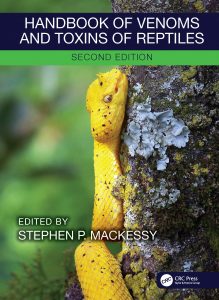
A greatly expanded “Handbook of Venoms and Toxins of Reptiles” has just been released by the CRC Press Publishing Company (Taylor & Francis Group). The handbook offers a unique resource for biologists, biochemists, toxicologists, physicians, clinicians, and epidemiologists, as well as informed laypersons interested in the biology of venomous reptiles, the biochemistry and molecular biology of venoms, and the effects and treatment of human envenomation. The chapter 'Snake Venom Phospholipase A2 Toxins' by Bruno Lomonte (Instituto Clodomiro Picado and Univesidad de Costa Rica) and Igor Križaj (Jožef Stefan Institute) offers a general overview of the current status and recent advances in understanding snake venom sPLA2s, with a focus on their medically most relevant actions.

Adrijan Ivanušec, PhD student at JSI and a member of the "Toxins and Biomembranes" Programme Group, will present a seminar entitled Interaction between secreted phospholipases A2 and mitochondria.
Ana Kump, PhD student at JSI and a member of the "Toxins and Biomembranes" Programme Group, will present a seminar entitled Lipid droplets – antioxidant organelles that protect cancer cells from ferroptosis. The seminars will be held on-line on Thursday May 20, starting at 14:00. Non-members of our Programme Group, who would like to attend the seminar contact Igor Križaj (igor.krizaj@ijs.si) to receive a link.

Tadeja Bele, PhD student at JSI and BF and a member of the "Toxins and Biomembranes" Programme Group, will present a seminar entitled Effects of selected α7-nicotinic acetylcholine receptor antagonists on adenocarcinoma cancer cells.
Veno Kononenko, researcher at the BF and a member of the "Toxins and Biomembranes" Programme Group will present a seminar entitled Nanodelivery systems of nAChR antagonists for the development of a novel lung cancer treatment strategy. The seminars will be held on-line on Thursday April 22, starting at 14:00. Non-members of our Programme Group, who would like to attend the seminar contact Igor Križaj (igor.krizaj@ijs.si) to receive a link.

In collaboration with clinicians from the University Medical Centres in Ljubljana and Split, and immunologists from the University of Zagreb, we prepared a research article entitled: Intravenous Vipera berus Fab fragments and intramuscular Vipera ammodytes F(ab’)2 fragments in Vipera ammodytes envenomed patients. The paper by Kurtović, T., Karabuva, S., Grenc, D., Dobaja Borak, M, Križaj, I., Lukšić, B., Halassy, B. and Brvar, M. was accepted for publication in Toxins in April 2021.
The aim of our study was to compare clinical efficacy and pharmacokinetic values of intravenous Vipera berus venom-specific (paraspecific) Fab fragments (ViperaTAb®) and intramuscular V. ammodytes venom-specific F(ab’)2 fragments (‘Zagreb’ antivenom) in V. ammodytes envenomed patients. The highest venom concentration, survival, length of hospital stay, and adverse reactions did not differ between the groups. Patients treated with intravenous Fab fragments were sicker, with significantly more rhabdomyolysis and neurotoxicity. The kinetics of Fab fragments after one or more intravenous applications matched better with venom concentration in the early phase of envenomation compared to F(ab’)2 fragments given intramuscularly only on admission. F(ab’)2 fragments given intramuscularly had 25-times longer apparent total body clearance and 14-times longer elimination half-time compared to Fab fragments given intravenously (2 weeks vs 24 hours, respectively). In V. ammodytes envenomed patients intramuscular use of specific F(ab’)2 fragments resulted in a slow rise of antivenom serum concentration that demands their early administration, but without the need for additional doses for complete resolution of all clinical signs of envenomation. Intravenous use of paraspecific Fab fragments resulted in immediate rise of antivenom serum concentration that enabled their use according to the clinical progress, but multiple doses might be needed for efficient therapy of thrombocytopenia due to venom recurrence, while progression of rhabdomyolysis and neurotoxic effects of the venom could not be prevented.

Neža Repar, PhD student at BF and a member of the "Toxins and Biomembranes" Programme Group, will present a seminar entitled (Exogenous) oleic acid suppresses superparamagnetic iron oxide nanoparticle-induced ferroptosis (in human umbilical vein endothelial cells).
Anja Pavlin, PhD student at BF and a member of the "Toxins and Biomembranes" Programme Group will present a seminar entitled Small proteins modulating the LexA-like regulators of the bacterial SOS response. The seminars will be held on-line on Thursday March 18, starting at 14:00. Non-members of our Programme Group, who would like to attend the seminar contact Igor Križaj (igor.krizaj@ijs.si) to receive a link.

Kity Požek, M.Sc. student, JSI-B2 associate and member of the "Toxins and Biomembranes" Programme Group, has been awarded in competition organized by a Hamish Ogston Foundation (https://www.hamishogstonfoundation.org) for her essay entitled: ''The impact of the Covid-19 pandemic on snakebite research and treatment''. In her essay, she discussed how the pandemic has affected the availability, accessibility, and affordability of snakebite treatment, as well as the challenges encountered by snakebite researchers due to the shift in focus and priorities towards Covid-19 research. She won a prize of £500 and waivement of the registration fee to attend the 2021 Venoms and Toxins Oxford Meeting (http://lpmhealthcare.com/venoms-and-toxins-2021/).

Following the successfully complete Slovenian-Austrian project “Crosstalk between lipid and central carbon metabolism” our yeast genetics group under the leadership of Uroš Petrovič, in collaboration with the group of Dr Klaus Natter from University Graz, published a paper Identification of novel genes involved in neutral lipid storage by quantitative trait loci analysis of Saccharomyces cerevisiae in BMC Genomics in February 2021.
The purpose of this study was to implement state-of-the-art polygenic trait analysis methodology to a trait for which survival-based selection is not possible – an important task since a substantial number of biotechnologically important traits fall into this group. The result of the study is the most accurate elucidation of genetic architecture of lipid storage in yeast Saccharomyces cerevisiae. We found three major causative genes for lipid accumulation in yeast: PIG1, PHO23 and RML2. Importantly, the causality was proved by allele-swapping, the most accurate confirmation possible of the role of these three genes in a process in which they have never been implicated before. No allelic variations of genes with known functions in lipid metabolism were identified as being important in the genetic architecture of lipid storage in yeast, indicating that the level of lipid accumulation is determined by many cellular processes that are not directly related to lipid metabolism. The results of the study are a stepping stone towards routine implementation of polygenic trait analysis for industrial yeast strains.

Andreja Habič, Master’s degree student at FCCT and a member of the "Toxins and Biomembranes" Programme Group will present a seminar entitled A Novel Method for Discovery of DNA–Protein Interaction Partners. The seminars will be held on-line on Thursday February 18, starting at 14:00. Non-members of our Programme Group, who would like to attend the seminar contact Igor Križaj (igor.krizaj@ijs.si) to receive a link.

Maida Jusović, MSc., doctoral student and a member of the "Toxins and Biomembranes" Programme Group, will present a seminar entitled Autophagy drives lipid droplet formation in severely starved cancer cells .
Špela Koren, Master’s degree student at FCCT and a member of the "Toxins and Biomembranes" Programme Group will present a seminar entitled Autophagy is involved in lipid droplet breakdown in serum-starved breast cancer cells. The seminars will be held on-line on Thursday January 21, starting at 14:00. Non-members of our Programme Group, who would like to attend the seminar contact Igor Križaj (igor.krizaj@ijs.si) to receive a link.

The review paper entitled: The quality of Slovenian chestnut honey and its specific properties relevant for medical application and functional nutrition prepared by partners collaborating on the project L4-1839 (Development of medical chestnut honey quality control and technology) has been accepted for publication in Acta Biologica Slovenica in December 2020.
In the paper we overview most distinct properties of chestnut honey important for its medical application. Chestnut honey is well-described in terms of sensory properties, pollen and chemical composition. Specific bitter taste is accompanied with other typical sensory properties derived from its chemical composition, especially in the nectar of sweet chestnut. Compounds from other sources of nectar and honeydew, especially linden, fir and spruce, with smaller amounts from meadow plants, create the specific sensory and chemical properties of Slovene chestnut honey. Based on the chemical composition of the honey, especially the content and proportions of different inorganic ions, it is possible to track the geographical origin of the pasture. Bees contribute significantly to recognized antimicrobial properties of honey by secretion of enzymes and antimicrobial peptides via the food processing glands. When the honey is used for medical purposes, we have to take precautions to avoid microbial and chemical contamination. For the planning of specific use of honey as a medical application we need to explore in detail specific pharmacological properties of single compounds from the chestnut honey and its contribution to the whole activity during wound treatment.
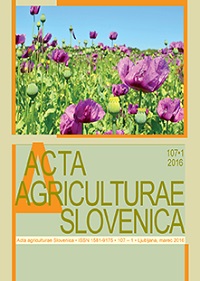
The paper entitled Discovery and molecular characterisation of the first ambidensovirus in honeybees by Sabina Ott Rutar and Dušan Kordiš has been accepted for publication in Acta agriculturae Slovenica in December 2020.
Honey bees play a critical role in global food production as pollinators of numerous crops. Several stressors cause declines in populations of managed and wild bee species, such as habitat degradation, pesticide exposure and pathogens. Viruses act as key stressors and can infect a wide range of species. The majority of honeybee-infecting viruses are RNA viruses of the Picornavirales order. Although some ssDNA viruses are common in insects, such as densoviruses, they have not yet been found in honeybees. Densoviruses were however found in bumblebees and ants. In this paper, they demonstrated that densoviruses are indeed present in the transcriptome of the eastern honeybee (Apis cerana) from southern China. On the basis of non-structural and structural transcripts, they inferred the genome structure of the Apis densovirus. Phylogenetic analysis has shown that this novel Apis densovirus belongs to the Scindoambidensovirus genus in the Densovirinae subfamily. Apis densovirus possesses ambisense genome organisation and encodes three non-structural proteins and a split VP (capsid) protein. The availability of a nearly complete Apis densovirus genome may enable the analysis of its potential pathogenic impact on honeybees. Our findings can thus guide further research into the densoviruses in honeybees and bumblebees.

Maja Hostnik, MSc., doctoral student and a member of the "Toxins and Biomembranes" Programme Group, will present a seminar entitled Isolation of a bacterial microcompartment organelle containing a selected DNA.
Dr. Matej Skočir, a member of the "Toxins and Biomembranes" Programme Group will present a seminar entitled Aegerolysin-like proteins as new theranostic tools in periodontal disease and prosthetic rehabilitation. The seminars will be held on-line on Thursday December 17, starting at 14:00. Non-members of our Programme Group, who would like to attend the seminar contact Igor Križaj (igor.krizaj@ijs.si) to receive a link.

Tihomir Rubil, Bolonian 2nd degree student at BF and JSI and a member of the "Toxins and Biomembranes" Programme Group, will present a seminar entitled Isolation of genomic DNA from the nose-horned viper and initial analysis of its metalloproteinase genes.
Kity Požek, Bolonian 2nd degree student at BF and JSI and a member of the "Toxins and Biomembranes" Programme Group will present a seminar entitled Characterization of VaaMPIII-3, a snake venom protein that defined a novel P-IIIe subclass of snake venom metalloproteinases. The seminars will be held on-line on Tuesday November 17, starting at 15:00. Non-members of our Programme Group, who would like to attend the seminar contact Igor Križaj (igor.krizaj@ijs.si) to receive a link.
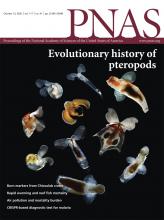
Members of our lipid metabolism group (Eva Jarc Jovičić and Toni Petan) contributed to a study entitled Synergy between 15-lipoxygenase and secreted PLA2 promotes inflammation by formation of TLR4 agonists from extracellular vesicles led by Dr. Mateja Manček-Keber from the National Institute of Chemistry and recently published in the Proceedings of the National Academy of Sciences of the United States of America (PNAS). The paper reveals a new mechanism of activation of inflammatory pathways by stress-induced extracellular vesicles containing oxidized lysophospholipids. The latter are produced by the synergistic activities of 15-lipoxygenase and group IIA secreted phospholipase A2 (sPLA2) enzymes, which are upregulated during inflammation and may be therapeutically targetted in inflammatory diseases such as rhemautoid arthritis. Our expertise in sPLA2 enzymology, cell biology and production of recombinant proteins was an important contribution to this important work. The paper was authored by Van Thai Ha, Duško Lainšček, Bernd Gesslbauer, Eva Jarc Jovičić, Tuulia Hyötyläinen, Nejc Ilc, Katja Lakota, Matija Tomšič, Fons A. J. van de Loo, Valery Bochkov, Toni Petan, Roman Jerala, and Mateja Manček-Keber and was published in October 2020.

An invited review paper by Toni Petan entitled Lipid Droplets in Cancer has recently been published online in Reviews of Physiology, Biochemistry and Pharmacology (open access full-text available as an online first version from October 2020). The article is part of an upcoming special volume on “Organelles in Disease” edited by Prof. Stine Helene Falsig Pedersen and Prof. Diane Barber. In this comprehensive review we discuss emerging evidence showing that lipid droplets are important parts of cancer metabolic reprogramming. We explore how these fat-laden but highly dynamic organelles consolidate lipid uptake, synthesis, recycling, distribution and breakdown in order to match these entangled lipid fluxes with the requirements for cancer cell survival, growth and metastasis. We focus on the mechanisms that govern lipid droplet function during metabolic stress and reveal their connections with autophagy and ferroptotic cell death. Finally, we discuss how dysregulated lipid droplet turnover may be detrimental to cancer cells, thereby providing exciting therapeutic opportunities in the future.

Anastasija Panevska, B.Sc., a young researher from the Biotechnical Faculty of the University of Ljubljana and a member of the "Toxins and Biomembranes" Programme Group, will present a seminar entitled Interactions of aegerolysins from fungal genus pleurotus with artificial and biological membranes. The seminar will be held on-line on Tuesday October 20, starting at 15:00. Non-members of our Programme Group, who would like to attend the seminar contact Igor Križaj (igor.krizaj@ijs.si) to receive a link.

In the scope of SLO-CRO bilateral project, we prepared a publication entitled: Evolutionary history of alpha satellite DNA repeats dispersed within human genome euchromatin. The paper by Isidoro Feliciello, Željka Pezer, Dušan Kordiš, Branka Bruvo Mađarić and Đurđica Ugarković was accepted for publication in Genome Biology and Evolution in October 2020.
In this study, using a bioinformatics approach, we characterized annotated alpha satellite repeats dispersed within euchromatin of the human genome, in particular those not organized in clusters but present as single repeat arrays. We traced their evolutionary history using other assembled primate genomes, in order to date when during the evolutionary history each of the extant dispersed alpha repeat was inserted within a particular primate genome and in which context the insertion occurred. We also followed the sequence evolution of the dispersed repeats and compared it to the evolution of species, and analysed the relation of dispersed repeats with centromeric and pericentromeric alpha satellite monomers. Finally, the mechanism of insertion and spreading of alpha repeats along the euchromatic portion of genome was studied. Our study of dynamics of dispersion of human alpha repeats throughout euchromatin during the evolutionary history contributes to the understanding of the possible evolutionary and functional significance of the satellite repeats spreading process.
In collaboration with researchers from the Veterinary Faculty, University of Ljubljana, we accomplished a study that resulted in publication entitled: The first Kunitz-type proteins from a viperid venom that potentiate neuromuscular transmission. The research paper by Drofenik, S., Leonardi, A., Žužek, M.C., Frangež, R. and Križaj, I. was accepted for publication in Toxicon in September 2020.
In this work, we characterized Kunitz-type proteins in Vipera a. ammodytes venom. These proteins, VaaChi, potently inhibit serine proteases, particularly chymotrypsin. Most interestingly, we found that they also facilitate neurotransmission in a manner similar to that of α-dendrotoxin. They also significantly increased the amplitude of the indirectly evoked simple muscle contraction of the mouse hemidiaphragm and the amplitudes of the end-plate potential and miniature end-plate potential. VaaChi are thus Kunitz-type proteins with dual functionality, representing the first examples of Kunitz-type proteins affecting neurotransmission from a viperid venom. What is the mechanism behind facilitation of neuromuscular transmission by VaaChi has not been established yet, however, blocking of K+ channels, as in the case of α-dendrotoxin, does not seem to be the most probable option.
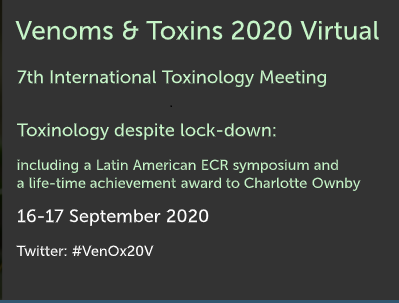
Adrijana Leonardi, master’s degree student Kity Požek and Igor Križaj, comprised the team that has been awarded for their work presented as a poster at the 7th Oxford Venoms and Toxins Meeting, organized virtually on 16 and 17 September 2020. On the poster entitled: “Biochemical and functional characterization of the first member of the new PIIIe subclass of snake venom metalloproteinases” they described the isolation and properties of the Vipera a. ammodytes venom protein VaaMPIII-3. This protein is the first representative of the new subclass of snake venom metalloproteinases (SVMPs), similar to P-III SVMPs but consisting of only a partial disintegrin-like and cysteine-rich domains. The protein acts as an inhibitor of platelet aggregation. Expressing an antithrombotic effect, it constitutes a suitable basis for development of new anticoagulants.

In the scope of multi-institutional collaboration, we participated in the study that resulted in a research article entitled: Widespread evolution of molecular resistance to snake venom α-neurotoxins in vertebrates. The paper by Khan, M.A., Dashevsky, D., Kerkkamp, H., Kordiš, D., de Bakker, M., Wouters, R., van Thiel, J., op den Brouw, B., Vonk, F., Kini, R.M., Nazir, J. , Fry, B. and Richardson, M. was accepted for publication in Toxins in September 2020.
Many venomous snakes have α-neurotoxins in their venoms. These toxins bind to nicotinic acetylcholine receptor (nAChR) at the neuromuscular junction, causing paralysis and asphyxia. Several venomous snakes and their predators have however evolved resistance to α-neurotoxins. The resistance is due to a steric hindrance between N-glycosylated Asn at positions 187 or 189 in the nAChR ligand-binding domain and α-neurotoxins, by electrostatic repulsion or steric hindrance between positively charged α-neurotoxins and Arg187 of the nAChR, or by inhibition of the α-neurotoxins binding to nAChR due to receptor structural changes induced by Pro194 or Pro197 replacement. In this study, we analyzed the nAChR ligand-binding domain of 148 vertebrate species, and assessed their amino acid sequences for the resistance-associated mutations. We find widespread convergent evolution of the N-glycosylation form of resistance in several taxa including venomous snakes and their lizard preys, but not in the snake-feeding birds. We also document new lineages with the Arg form of inhibition. Using an in vivo assay in four species, we provided further evidence that N-glycosylation mutations of nAChR reduce the toxicity of cobra venom. Our research shows that the evolution of α-neurotoxins in snakes may well have prompted arms races and mutations to this ancient receptor across a wide range of vertebrates.

In collaboration with researchers from the University of Singapore and the University Medical Center in Ljubljana, we prepared a research article entitled: The procoagulant snake venom serine protease potentially having a dual, blood coagulation factor V and X-activating activity. The paper by Latinović, Z., Leonardi, A., Koh, C.Y., Kini, R.M., Trampuš Bakija, A., Pungerčar, J. and Križaj, I. was accepted for publication in Toxins in May 2020.
A procoagulant snake venom serine protease has been isolated from the venom of the nose-horned viper (Vipera ammodytes ammodytes). This 34 kDa glycoprotein, termed VaaSP-VX, possesses five kDa N-linked carbohydrates. Amino acid sequencing has shown VaaSP-VX to be a chymotrypsin-like serine protease. Structurally, it is highly homologous to VaaSP-6 from the same venom and to nikobin from the venom of Vipera nikolskii, neither having known functions. VaaSP-VX has no effect on platelets. Specific proteolysis of blood coagulation factors X and V by VaaSP-VX suggests that its blood coagulation-inducing effect is due to its ability to activate these two blood coagulation factors, which, following activation, combine to form the prothrombinase complex. VaaSP-VX may thus represent the first example of a serine protease with such a dual activity, which makes it a highly suitable candidate to replace diluted Russell`s viper venom in lupus anticoagulant testing, thus achieving greater reliability of the analysis. As a blood coagulation-promoting substance, resistant to serpin inhibition, VaaSP-VX is also interesting from the therapeutic point of view, for treating patients suffering from haemophilia.

In collaboration with researchers from the University of Zagreb we prepared a research article entitled Biological activities and proteomic profile of the venom of Vipera ursinii ssp., a very rare karst viper from Croatia. The paper by Lang Balija M.*, Leonardi, A.*, Brgles, M., Sviben, D., Kurtović, T., Halassy, B. and Križaj, I. was accepted for publication in Toxins in March 2020.
The karst viper (Vipera ursinii ssp.) favours high-mountain dry grasslands in southern and south-eastern Croatia. It is medically less important than other Vipera species, because of its remote habitat and the very small amount of venom that it injects by its relatively short fangs. In the paper, we report on the composition and biological activity of the Vipera ursinii ssp. venom. Using a proteomics approach, we have identified proteins in the venom that belong to 7 protein families: snake venom metalloproteinase, serine protease, secreted phospholipase A2, cysteine-rich secretory protein, snake C-type lectin-like protein, serine protease inhibitor and nerve growth factor. The Vipera ursinii ssp. venom was found to be distinctively insecticidal. Its lethal toxicity towards crickets was more than 5 times greater than that of Vipera ammodytes ammodytes venom, while the opposite held in mice. Interestingly, the mode of dying after injecting a mouse with Vipera ursinii ssp. venom may suggest the presence of a neurotoxic component. Neurotoxic effects of European vipers have so far been ascribed exclusively to ammodytoxins and ammodytoxin-like basic secreted phospholipases A2. Structural and immunological analyses of the Vipera ursinii ssp. venom however confirmed that ammodytoxin-like proteins are not present in this venom.

We published a paper entitled Analysis of the RNA virome of basal hexapods by the authors Sabina Ott Rutar and Dušan Kordiš in the Peer Journal in January 2020.
The diversity and evolution of RNA viruses has been well studied in arthropods and especially in insects. However, the diversity of RNA viruses in the basal hexapods has not been analysed yet. To better understand their diversity, evolutionary histories and genome organizations, we searched for RNA viruses in transcriptome and genome databases of basal hexapods. We discovered ~40 novel RNA viruses, some of which are also present as endogenous viral elements derived from RNA viruses. Here, we demonstrated that basal hexapods host 14 RNA viral clades that have been recently identified in invertebrates. The following RNA viral clades are associated with basal hexapods: Reo, Partiti-Picobirna, Toti-Chryso, Mono-Chu, Bunya-Arena, Orthomyxo, Qinvirus, Picorna-Calici, Hepe-Virga, Narna-Levi, Tombus-Noda, Luteo-Sobemo, Permutotetra and Flavi. We have found representatives of the nine RNA viral clades that are present as endogenous genomic copies in the genomes of Machilis (Monocondylia) and Catajapyx (Diplura). Our study provided a first insight into the diversity of RNA viruses in basal hexapods and demonstrated that the basal hexapods possess quite high diversity of RNA viral clades.

As partners, participating with fluorescence microscopy analysis, we co-authored a paper entitled Anti-vimentin, anti-TUFM, anti-NAP1L1 and anti-DPYSL2 nanobodies display cytotoxic effect and reduce glioblastoma cell migration by authors Alja Zottel, Ivana Jovčevska, Neja Šamec, Jernej Mlakar, Jernej Šribar, Igor Križaj, Marija Skoblar Vidmar, Radovan Komel in Therapeutic Advances in Medical Oncology, accepted for publication in March 2020.
Glioblastoma is a particularly common and very aggressive primary brain tumour. One of the main causes of therapy failure is the presence of glioblastoma stem cells that are resistant to chemotherapy and radiotherapy, and that have the potential to form new tumours. Our study focuses on validation of eight novel antigens, TRIM28, nucleolin, vimentin, NAP1L1, TUFM, DPYSL2, CRMP1 and ALYREF, as putative glioblastoma targets, using nanobodies. Indicated for further examination, cells have been exposed to anti-vimentin, anti-NAP1L1, anti-TUFM or anti-DPYSL2 nanobodies. Therapeutically most interesting effects were demonstrated using anti-TUFM and anti-vimentin nanobodies. The former induced a potent inhibition of glioblastoma cell growth after long-term exposure, having only minor effects on astrocytes. The latter efficiently inhibited cell migration.

Adrijan Ivanušec, B.Sc., a young researcher at JSI-B2 and a member of the "Toxins and Biomembranes" Programme Group, will present a lecture entitled Interaction between secreted phospholipases A2 and mitochondria. The event is scheduled for 13 February 2020 at 14:30 in room B220 (2nd floor, Biochemistry building) at the Jožef Stefan Institute (JSI), Jamova cesta 39, Ljubljana.

Anja Pavlin from the Biotechnical Faculty of the University of Ljubljana and a member of the "Toxins and Biomembranes" Programme Group, will present a seminar entitled The bacteriophage GIL01 take-over mechanisms of the host's SOS response. The event is scheduled for 23 January 2020 at 14:30 in the lecture room B3 at the Department of Biology of the Biotechnical Faculty of the University of Ljubljana.
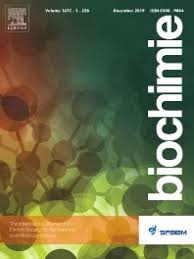
The paper “A twist of FATe: Lipid droplets and inflammatory lipid mediators” by Eva Jarc and Toni Petan was published upon invitation in the special issue of Biochimie entitled "Biogenesis and fate of lipid droplets". Biochimie is the official journal of the Société Française de Biochimie et Biologie Moléculaire and we are delighted to have had the opportunity to contribute to this issue. In this review paper we discuss the principal ways in which lipid droplets regulate the availability of fatty acids for the activation of inflammatory signaling pathways and for the production of lipid mediators. On the one hand, lipid droplets sequester lipids and proteins thereby limiting their availability for participation in signaling pathways. On the other hand, lipids derived from the neutral lipid core or the phospholipid monolayer of lipid droplets directly act as signaling mediators or are converted into ones. Traditionally, the hydrolysis of glycerophospholipids in cellular membranes by various phospholipase A2 enzymes has been considered the main source and stimulus for lipid mediator synthesis. Here we expand this view by discussing novel evidence that identifies lipid droplets as sources for lipid mediator production, thereby challenging the dogmatic view of phospholipase-driven inflammatory lipid mediator synthesis.

Eva Jarc Jovičić, B.Sc., a young researcher at JSI-B2 and a member of the "Toxins and Biomembranes" Programme Group, will present a lecture entitled Are inflammatory lipid mediators derived from membranes or neutral lipids? The event is scheduled for 19 December 2019 at 14:30 in room B220 (2nd floor, Biochemistry building) at the Jožef Stefan Institute (JSI), Jamova cesta 39, Ljubljana.
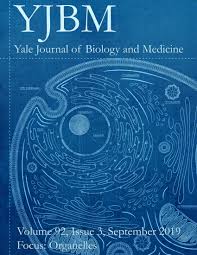
We are happy to have been invited to write a manuscript for Yale Journal of Biology and Medicine, a journal continuously published since 1928 and edited by Yale medical and graduate students. Our review paper "Lipid Droplets and the Management of Cellular Stress" by Eva Jarc & Toni Petan was prepared for the September special issue entitled "Organelles" and was selected as an Editor’s pick.
Lipid droplets are fat storage organelles, emerging as major regulators of cellular metabolism. We have previously found that in cancer cells, they suppress cell death during starvation and reduce lipotoxic insults, thereby increasing the resilience of some of the most aggressive forms of cancer. However, their ability to suppress cellular stress extends well beyond their role in cancer cells. In fact, these organelles have numerous functions in the daily life of each of our cells. Lipid droplets provide protection against excess dietary fat, but also enable optimal energy production in the muscle and the heart, complement autophagy during starvation and regulate inflammatory and immune responses. In each cell, they modulate membrane lipid composition and dynamics, take care of damaged proteins and lipids, patrol the cell to form dynamic contacts with mitochondria and stimulate oxidative metabolism. Lipid droplets are even formed in the nucleus to orchestrate gene expression and nuclear function. These and other ways in which lipid droplets help cells fight against various forms of stress were the focus of this work.

The research article entitled Democratized image analytics by visual programming through integration of deep models and small-scale machine learning by Godec P, Pančur M, Ilenič N, Čopar A, Stražar M, Erjavec A, Pretnar A, Demšar J, Starič A, Toplak M, Žagar L, Hartman J, Wang H, Bellazzi R, Petrovič U, Garagna S, Zuccotti M, Park D, Shaulsky G, Zupan B. was published in Nature Communication in October 2019.
High-content microscopy (HCM) is one of the most powerful genome-wide analysis techniques. Our department’s yeast genetics research group has pioneered this approach in the yeast Saccharomyces cerevisiae (J Proteome Res (2009) 8:20), and has used it to identify the PerMES complex that tethers peroxisomes with mitochondria (J Mol Biol (2015) 427:2072). Image analysis is a crucial part of HCM. In collaboration with the Bioinformatics Laboratory from the Faculty of Computer and Information Science of the University of Ljubljana we set off to engage deep learning approaches for image analysis, and to combine them with user-friendly tools for exploratory data analysis. The result is a visual programming toolbox Orange integrated with deep-learning embedding, machine learning procedures, and data visualization. This new, 'democratized' image analytics by visual programming supports the construction of data analysis workflows by assembling components for data preprocessing, visualization, and modeling.

Dr. Veno Kononenko from the Biotechnical Faculty of the University of Ljubljana and a member of the "Toxins and Biomembranes" Programme Group, will present a seminar entitled Potential of 3-alkylpyridinium salt-nanoparticle (APS-NP) cotreatment for cancer therapy. The event is scheduled for 17 October 2019 at 14:30 in the lecture room B7 at the National Institute of Biology.
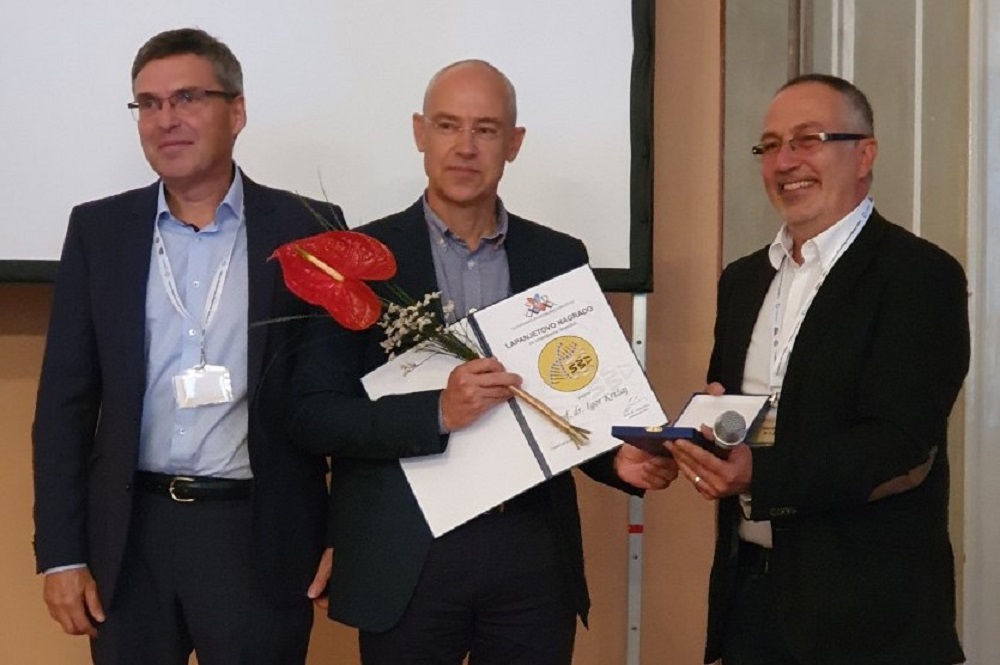
On September 26th 2019, during the 13th Meeting of the Slovenian Biochemical Society in Dobrna, Igor Križaj received Lapajnetova award, the highest award by the Slovenian Biochemical Society, for his outstanding scientific achievements that make an important contribution to the development of biochemical sciences in Slovenia. On that occasion, he delivered a lecture entitled: “Yin and yang of animal venoms”.
The justification of his decoration can be read at http://www.sbd.si/sl/nagrajenci/40/lapanjetova-nagrada/igor-krizaj.

Mojca Ogrizović, B.Sc., a young researcher at JSI-B2 and a member of the "Toxins and Biomembranes" Programme Group, will present a lecture entitled Intra-organelle communication through Pex11 in yeast Saccharomyces cerevisiae. The event is scheduled for 19 September 2019 at 14:30 in room B220 (2nd floor, Biochemistry building) at the Jožef Stefan Institute (JSI), Jamova cesta 39, Ljubljana.
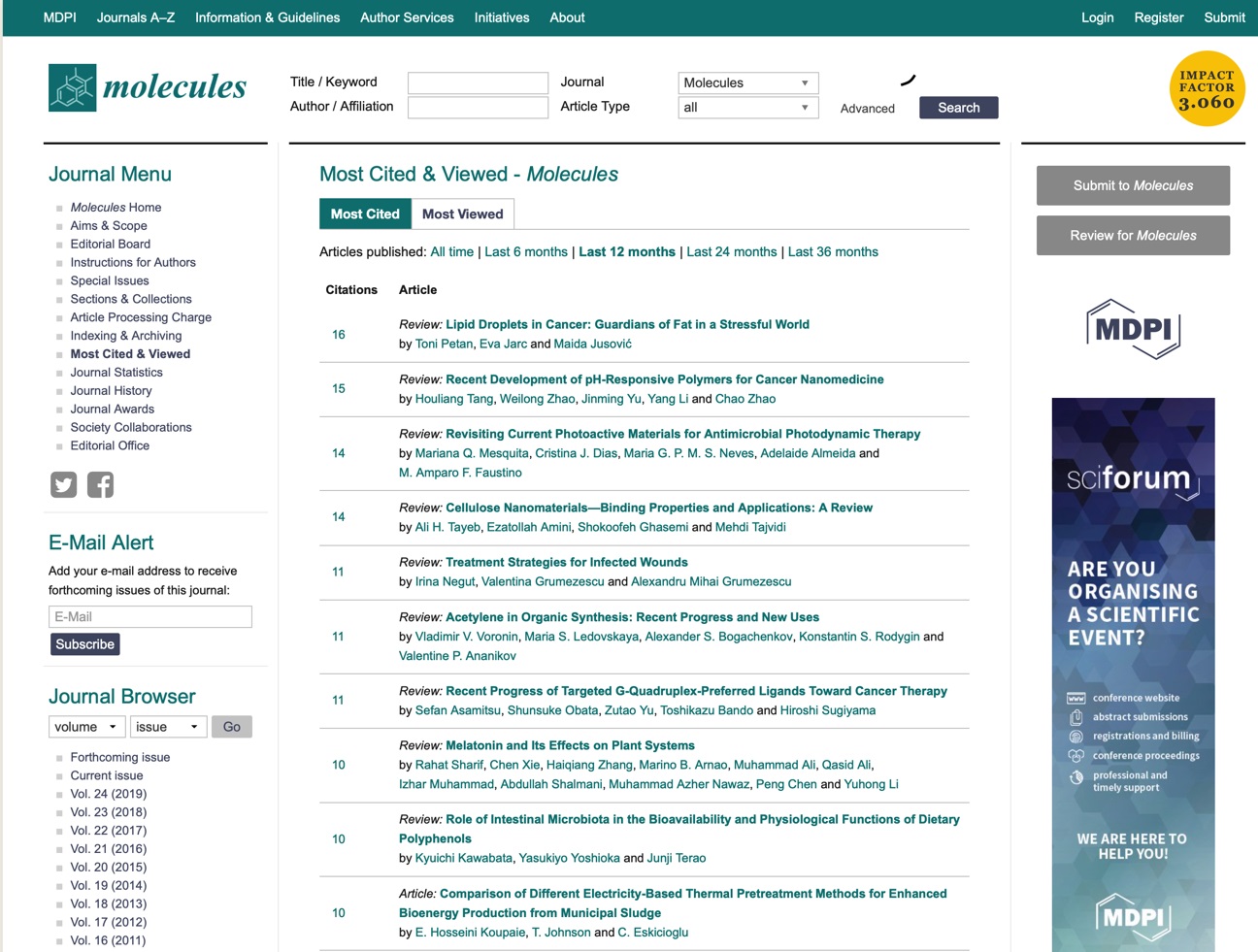
Our review Lipid Droplets in Cancer: Guardians of Fat in a Stressful World, by Toni Petan, Eva Jarc and Maida Jusović, published a year ago in Molecules, is currently the most cited article in the journal in the last 12 months: https://www.mdpi.com/journal/molecules/most_cited.

Dr. Klementina Fon Tacer, Department of Cell and Molecular Biology St. Jude Children’s Research Hospital Memphis, TN, USA, will present a lecture entitled Crossroads of cancer and spermatogenesis: MAGE cancer-testis antigens evolved to protect mammalian germ cells under stress. The event is scheduled for 1 July 2019 at 10:00 in the lecture room »Kolarjeva predavalnica« at the Jožef Stefan Institute (JSI), Jamova cesta 39, Ljubljana.
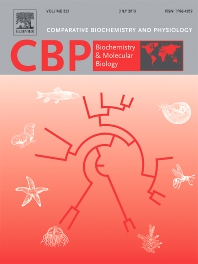
The research article entitled Vitellogenin in the European cave salamander, Proteus anguinus: its characterization and dynamics in a captive female as a basis for non-destructive sex identification by Gredar, T., Leonardi, A., Novak, M., Sepčič, K., Bizjak Mali, L., Križaj, I. and Kostanjšek, R. was accepted for publication in Comparative Biochemistry and Physiology - Part B: Biochemistry & Molecular Biology in May 2019.
Vitellogenin (Vtg) is a female-specific protein and could be used as a molecular marker for sex identification. With such ambition, we thoroughly characterized this protein in the European blind cave salamander or proteus (Proteus anguinus). In this endangered animal, sexes are namely indistinguishable according to external morphology, which hinders the establishment of efficient captive breeding program. Most importantly, we identified Vtg in the plasma of vitellogenic proteus female with visible oocytes and showed that simultaneously with the degradation of oocytes also the Vtg concentration was decreasing until it dropped under the detection level. Thus, we exposed Vtg as a promising molecular marker for sex identification at proteus, advancing the reproductive programme of this unique species.

Dr. Maja Grundner from the Biotechnical Faculty of the University of Ljubljana and a member of the "Toxins and Biomembranes" Programme Group, will present a seminar entitled DNA sampling II- method for isolation and characterisation of DNA-protein complexes. The event is scheduled for 16 May 2019 at 14:30 in the lecture room B4 at the Department of Biology of the Biotechnical Faculty of the University of Ljubljana.
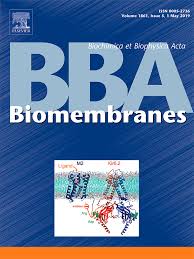
The review article entitled Ceramide phosphoethanolamine, an enigmatic cellular membrane sphingolipid by Panevska, A., Skočaj, M., Križaj, I., Maček, P. and Sepčić, K. was accepted for publication in Biochim. Biophys. Acta – Biomembranes in May 2019.
This review is presenting ceramide phosphoethanolamine (CPE) the major sphingolipid in invertebrates and in some bacterial species. Although only in trace amounts, it has been detected also in mammalian cells. Understanding of the biophysical and physiological relevance of CPE is still elusive. It is apparent however that it differs in its biosynthetic mechanisms from sphingomyelin, due to the specific CPE synthase in invertebrates. In contrast to well-established sphingomyelin/cholesterol interactions that result in the formation of ordered membrane domains, the formation of ordered CPE/cholesterol domains is not favored. CPE might be crucial for the early development of Drosophila melanogaster, and it might be involved in the developmental stages of Trypanosoma bruceii. As a Bacteroidetes-associated sphingolipid, CPE might also be involved in maintenance of these bacteria in their ecological niches. An efficient detection of CPE in biological systems is needed to better define its distribution and biological role(s).
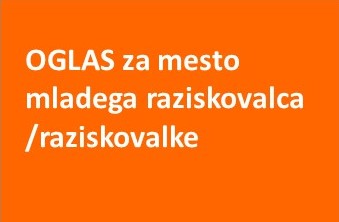
OGLAS za mesto mladega raziskovalca/raziskovalke za raziskave v biokemiji in celični biologiji
Na Institutu Jožef Stefan, na Odseku za molekularne in biomedicinske znanosti, in na Biotehniški fakulteti Univerze v Ljubljani, na Oddelku za biologijo, iščemo mladega raziskovalca / raziskovalko za raziskave v biokemiji in celični biologiji. Zaželeno je, da sta kandidatka ali kandidat končala drugo stopnjo študija biologije (molekularna-fiziološka smer), biokemije, biotehnologije ali farmacije. Področje dela bo predvsem biokemija in celična biologija. Več o delu in temi doktorske disertacije.
Prednost pri izbiri bodo imele kandidatke ali kandidati z visoko poprečno oceno študija in tisti, ki že imajo izkušnje z delom v biokemiji in celični biologiji. Kandidatke in kandidate z veseljem do znanosti in visoko motivacijo za raziskovalno delo vabiva, da se nama javite s predstavitveno-motivacijskim pismom na e-naslova igor.krizaj@ijs.si in Tom.Turk@bf.uni-lj.si, nakar vas bova povabila še na pogovor. Vpis na doktorski študij je septembra, zaposlitev in začetek raziskovalnega dela v okviru programske skupine Toksini in biomembrane (P1-0207) pa je predviden v začetku oktobra 2019.
Prof. dr. Igor Križaj Prof. dr. Tom Turk

The research article entitled A comprehensive study of the proteome and transcriptome of the venom of the most venomous European viper: Discovery of a new subclass of ancestral snake venom metalloproteinase precursor-derived proteins by Leonardi, A., Sajevic, T., Pungerčar, J. and Križaj, I. was accepted for publication in Journal of Proteome Research in April 2019.
The nose-horned viper, Vipera ammodytes ammodytes (Vaa), is medically one of the most relevant snakes in Europe. The local and systemic clinical manifestations of poisoning by the venom of this snake are the result of the pathophysiological effects inflicted by enzymatic and non-enzymatic venom components acting, most prominently, on blood, cardiovascular and nerve systems. To help improve the current antivenom therapy towards higher specificity and efficiency, and to assist drug discovery, we have constructed, by combining transcriptomic and proteomic analyses, the most comprehensive library yet of the Vaa venom proteins and peptides. Sequence analysis of the venom gland cDNA library has revealed the presence of messages encoding 12 types of polypeptide precursors. At the protein level, 57 venom proteins belonging to 16 different protein families have been identified and, with serine proteases, secreted phospholipases A2, snaclecs and metalloproteinases, comprise about 80% of all venom proteins. Peptides detected in the venom include natriuretic peptides, bradykinin-potentiating peptides and inhibitors of serine- and metalloproteases. Of particular interest, a transcript coding for a protein similar to P-III metalloproteinases but lacking the metalloproteinase domain was also found at the protein level in the venom. The existence of such proteins has been demonstrated for the first time, justifying the proposal of a new P-IIIe subclass of ancestral metalloproteinase precursor-derived proteins.

Gašper Žun, B.Sc., a young researher from the Faculty of Chemistry and Chemical Technology of the University of Ljubljana, will present a seminar entitled New prospects in polygenic traits analysis. The event is scheduled for 18 April 2019 at 14:30 in room B220 (2nd floor, Biochemistry building) at the Jožef Stefan Institute (JSI), Jamova cesta 39, Ljubljana.

Anastasija Panevska, B.Sc., a young researher from the Biotechnical Faculty of the University of Ljubljana and a member of the "Toxins and Biomembranes" Programme Group, will present a seminar entitled New insights into the unique binding of ostreolysin A with lipid membranes. The event is scheduled for 21 March 2019 at 14:30 in room B220 (2nd floor, Biochemistry building) at the Jožef Stefan Institute (JSI), Jamova cesta 39, Ljubljana.

Adrijan Ivanušec, B.Sc., a young researcher at JSI-B2 and a member of the "Toxins and Biomembranes" Programme Group, will present a lecture entitled Characterisation of interaction between sPLA2s and mitochondria. The event is scheduled for 14 February 2019 at 14:30 in room B220 (2nd floor, Biochemistry building) at the Jožef Stefan Institute (JSI), Jamova cesta 39, Ljubljana.

Dr. Matej Skočaj from the Biotechnical Faculty of the University of Ljubljana and a member of the "Toxins and Biomembranes" Programme Group, will present a seminar entitled Aegerolysin-like proteins as new theranostic tools in periodontal disease and prosthetic rehabilitation? The event is scheduled for 24 January 2019 at 14:30 in the lecture room B3 at the Department of Biology of the Biotechnical Faculty of the University of Ljubljana.

Assist. Prof. Cene Gostinčar from the Biotechnical Faculty of the University of Ljubljana and a member of the "Toxins and Biomembranes" Programme Group, will present a seminar entitled Ekstremna okolja – ekstremni genomi? The event is scheduled for 20 December 2018 at 14:30 in the lecture room B5 at the Department of Biology of the Biotechnical Faculty of the University of Ljubljana.

The article entitled Thrombocytopenic purpura following envenomation by the nose-horned viper (Vipera ammodytes ammodytes): Two case reports by Lukšić, B., Karabuva, S., Markić, J., Polić, B., Kovačević, T., Meštrović, J. and Križaj, I. was accepted for publication in Medicine (Baltimore) in November 2018.
In collaboration with the colleagues from the University Hospital of Split and the University of Split we reported two unique cases of poisoning with the nose-horned viper (Vipera ammodytes ammodytes – Vaa) venom in which, for the first time, thrombocytopenic purpura in patients has been detected. These unexpected clinical findings were characterized by unusually profound thrombocytopenia of the patients and purpura, observed on the face and thorax of both individuals. In most serious cases, such pathology can be even life-threatening if not promptly recognized and treated. This is an important message to clinicians to consider possibility of such complication also in the case of the nose-horned viper envenomation.
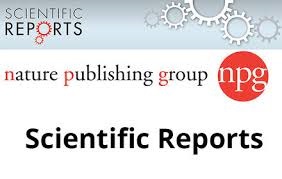
The research article entitled The neurotoxic secreted phospholipase A2 from the Vipera a. ammodytes venom targets cytochrome c oxidase in neuronal mitochondria by Šribar, J., Kovačič, L., Oberčkal, J., Ivanušec, A., Petan, T., Jay W. Fox and Križaj, I. was accepted for publication in Scientific Reports in November 2018.
The β-neurotoxic secreted phospholipases A2 (sPLA2s) block neuro-muscular transmission by poisoning nerve terminals. Damage inflicted by such sPLA2s (β-ntx) on neuronal mitochondria is characteristic, very similar to that induced by structurally homologous endogenous group IIA sPLA2 when its activity is elevated, as, for example, in the early phase of Alzheimer’s disease. Using ammodytoxin (Atx), the β-ntx from the venom of the nose-horned viper (Vipera a. ammodytes), we detected the sPLA2 receptor R25 in neuronal mitochondria. Here we describe its purification from mitochondria by a new Atx-affinity-based chromatographic procedure and its structural characterization. R25 is the subunit II of cytochrome c oxidase (CCOX), an essential constituent of the respiratory chain complex. We confirmed CCOX as the first intracellular membrane receptor for sPLA2 by alternative Atx-affinity-labellings of purified CCOX and by demonstrating the encounter of Atx and CCOX in PC12 cells. This discovery suggests the explanation of the mechanism by which β-ntx hinders production of ATP in poisoned nerve endings. It also provides a new insight into the potential function and dysfunction of endogenous GIIA sPLA2 in mitochondria.
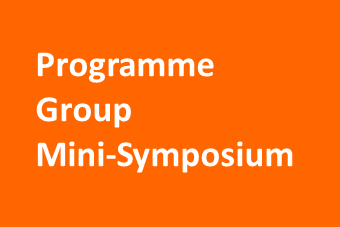
On 19 and 21 November we will organize a traditional Mini-symposium of our Programme Group. On this occasion members of the group will present their research results and projects. As well, some guests, representatives of the partner groups, will present their projects and joint activities. The event is of an informal and working character to maximally stimulate a critical discussion about the presented results and ideas, aiming to reveal novel collaboration possibilities. The detailed programme of the meeting can be found here.

Valerija Vezočnik, B. Sc., a young researher from the Biotechnical Faculty of the University of Ljubljana and a member of the "Toxins and Biomembranes" Programme Group, will present a seminar entitled Kinetically stable triglyceride-based nanodroplets. The event is scheduled for 18 October 2018 at 14:30 in the lecture room B3 at the Department of Biology of the Biotechnical Faculty of the University of Ljubljana.

Eva Jarc, B.Sc., a young researcher at JSI-B2 and a member of the "Toxins and Biomembranes" Programme Group, will present a lecture entitled Between death and survival: lipid droplets protect cancer cells against nutrient stress. The event is scheduled for 27 September 2018 at 14:30 in room B220 (2nd floor, Biochemistry building) at the Jožef Stefan Institute (JSI), Jamova cesta 39, Ljubljana.
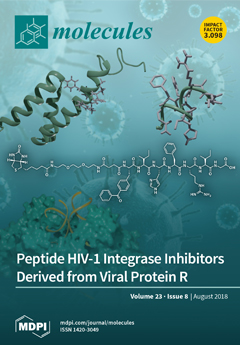
In our review paper entitled Lipid Droplets in Cancer: Guardians of Fat in a Stressful World we discuss the roles of lipid droplets in stressed cells, focusing in particular on cancer. These newly recognized organelles are found in almost all organisms from bacteria to men and have been traditionally thought to function merely as fat storage depots. Lipid droplets have a unique structure among organelles – they consist of a central hydrophobic core composed of triglycerides and sterol esters covered by a phospholipid monolayer embedded with hundreds of proteins and enzymes, whose functions are mostly unknown. Lipid droplets are highly dynamic organelles and move rapidly across the cytoplasm, they grow, shrink and fuse in response to various stimuli. Intriguingly, lipid droplets accumulate in various tumours and in cells exposed to nutrient and oxidative stress, suggesting a close relationship between lipid droplets and the cellular stress response. In this review, we discuss the emerging mechanisms of stress-induced lipid droplet biogenesis, the roles of lipid droplets during stress, and the complex bidirectional relationship between lipid droplets and autophagy in cancer and beyond.
The review paper by Toni Petan, Eva Jarc and Maida Jusović was published online on 3 August 2018 in Molecules. doi.org/10.3390/molecules23081941.
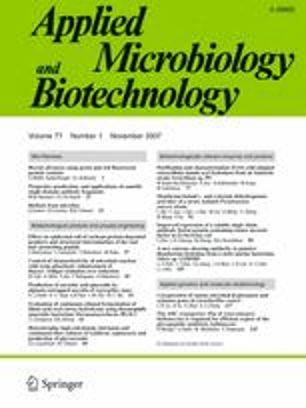
Members of our lipid metabolism group (Eva Jarc and Toni Petan) contributed to a study entitled Engineering recombinant Lactococcus lactis as a delivery vehicle for BPC-157 peptide with antioxidant activities, recently published in Applied Microbiology and Biotechnology and led by Dr. Aleš Berlec from the Department of Biotechnology at Jožef Stefan Institute. Our expertise in flow cytometry and dynamic analysis of oxidative stress in mammalian cells was crucial for the determination of antioxidant activity of BPC-157, a pentapeptide drug candidate for inflammatory bowel disease. In our study, antioxidant BPC-157 was successfully produced by an engineered lactic acid bacteria Lactococcus lactis, which may be used in the future as a delivery vehicle for this anti-inflammatory peptide in treatments of gastrointestinal inflammation. The paper was authored by Katja Škrlec, Rudolf Ručman, Eva Jarc, Predrag Sikirić, Urban Švajger, Toni Petan, Milica Perišić Nanut, Borut Štrukelj and Aleš Berlec and was published in August 2018.
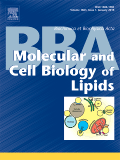
The study by Bhutada, G., Kavšček, M., Hofer, F., Gogg-Fassolter, G., Schweiger, M., Darnhofer, B., Kordiš, D., Birner-Gruenberger, R. and Natter, K., who coordinated the work from the University of Graz, resulted in the research paper entitled Characterization of a lipid droplet protein from Yarrowia lipolytica that is required for its oleaginous phenotype. The article was accepted for publication in BBA - Molecular and Cell Biology of Lipids in July 2018.
In this study of the perilipin-like proteins in the yeast Yarrowia lipolytica we participated by bioinformatics and evolutionary analysis as well as with homology modelling and secondary structure prediction of diverse lipid droplet-binding proteins from yeast. Such approach enabled us to classify these highly divergent proteins, to structurally characterize them and to provide an explanation of their interaction with the lipid droplet membrane.
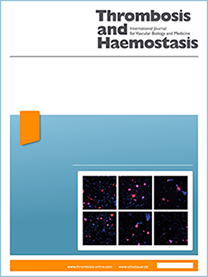
In collaboration with researchers from the National University of Singapore, the University Medical Center Ljubljana, and the North Carolina Agricultural and Technical State University we prepared a research article entitled The first intrinsic tenase complex inhibitor with serine protease structure offers a new perspective in anticoagulant therapy. The paper by Latinović, Z., Leonardi, A., Kovačič, L., Koh, C.Y., Šribar, J., Trampuš Bakija, A., Venkateswarlu D., Kini, R.M. and Križaj, I. was accepted for publication in Thrombosis and Haemostasis in July 2018.
Components of the intrinsic blood coagulation pathway, among them FVIIIa, have been recognized as suitable therapeutic targets to treat venous thromboembolism, pathological process behind two very serious cardiovascular diseases, deep vein thrombosis and pulmonary embolism. In this work we described a unique glycoprotein from the nose-horned viper venom, VaaSPH-1, structurally a serine protease but without an enzymatic activity and expressing potent anticoagulant action in human blood. We demonstrated that one of its targets in the blood coagulation system is FVIIIa of the intrinsic tenase complex, where it antagonizes the binding of FIXa. Anticoagulants with such characteristics are intensively sought, as they would be much safer for medical application as the contemporary drugs, which frequently induce excessive bleeding and other complications. VaaSPH-1 represents a very promising template to design low molecular mass FVIIIa-directed anticoagulant substances, based on structural features of the interaction surface between VaaSPH-1 and FVIIIa. To this end, we constructed a three-dimensional model of VaaSPH-1 bound to FVIIIa and proposed the most appropriate structural elements of VaaSPH-1 to constitute small FVIIIa-binding molecules, potential new generation of anticoagulants.

Dr. Jernej Šribar, a member of Department of Molecular and Biomedical Sciences, will present a lecture entitled Ammodytoxin-binding proteins and their potential role in the process of neurotoxicity. The event is scheduled for 14 June 2018 at 15:30 in the lecture room B3 at the Department of Biology of the Biotechnical Faculty of the University of Ljubljana.

Maruša Novak, B. Sc., a young researher from the Biotechnical Faculty of the University of Ljubljana and a member of the "Toxins and Biomembranes" Programme Group, will present a seminar entitled Fungal and bacterial aegerolysins: binding to artificial and biological membranes. The event is scheduled for 14 June 2018 at 14:30 in the lecture room B3 at the Department of Biology of the Biotechnical Faculty of the University of Ljubljana.
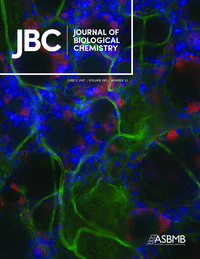
In collaboration with our colleagues from Texas A&M University and University of California, USA, we prepared a research article entitled Ethanolamine ameliorates mitochondrial dysfunction in cardiolipin-deficient yeast cells. The paper by Basu Ball, W., Baker, C. D., Neff, J. K., Apfel, G. L., Lagerborg, K.A., Žun, G., Petrovič, U., Jain, M. and Gohil, V. M. was accepted for publication in Journal of Biological Chemistry in June 2018.
Phospholipid cardiolipin is a vital component of mitochondria and is essential for the formation of the respiratory chain complexes on the mitochondrial inner membrane. Cardiolipin deficiency causes destabilization of the respiratory chain complexes, leading to inability to respire in yeast Saccharomyces cerevisiae, and to a disease called Barth syndrome in humans. This paper reports that ethanolamine supplementation can rescues the cardiolipin deficiency by promoting assembly of the respiratory chain complexes in a yeast model of Barth syndrome. Specifically, ethanolamine supplementation rescues the respiratory growth of cardiolipin-deficient yeast cells in a dose-dependent manner. This effect is independent of the incorporation of ethanolamine into phosphatidylethanolamine, another major phospholipid in the mitochondrial membranes, and cannot be replicated by supplementation of choline or serine, two other major phospholipid precursors. Our group performed a series of chemogenomics experiments to try to elucidate the molecular mechanism of the observed physiological effects of ethanolamine. This work identified a novel role of ethanolamine in attenuating mitochondrial dysfunction caused by cardiolipin deficiency. doi: 10.1074/jbc.RA118.004014

Valerija Vezočnik, B. Sc., a young researher from the Biotechnical Faculty of the University of Ljubljana and a member of the "Toxins and Biomembranes" Programme Group, will present a seminar entitled Nanoemulsions of lipid droplets as a model lipid system. The event is scheduled for 17 May 2018 at 14:30 in the lecture room B3 at the Department of Biology of the Biotechnical Faculty of the University of Ljubljana.

Adrijan Ivanušec, B.Sc., a young researcher at JSI-B2 and a member of the "Toxins and Biomembranes" Programme Group, will present a lecture entitled Characterization of the interaction between sPLA2s and mitochondria. The event is scheduled for 18 April 2018 at 8:30 in room B220 (2nd floor, Biochemistry building) at the Jožef Stefan Institute (JSI), Jamova cesta 39, Ljubljana.

Zorica Latinović, B.Sc., a young researcher at JSI-B2 and a member of the "Toxins and Biomembranes" Programme Group, will present a lecture entitled Expression of snake venom proteins in mammalian cell line. The event is scheduled for 22 March 2018 at 14:30 in room B220 (2nd floor, Biochemistry building) at the Jožef Stefan Institute (JSI), Jamova cesta 39, Ljubljana.

As partners, participating with fluorescence microscopy analysis, we co-authored a paper entitled Glioblastoma-specific anti-TUFM nanobody for in-vitro immunoimaging and cancer stem cell targeting by authors Samec, N., Jovčevska, I., Stojan, J., Zottel, A., Liović, M., Myers, M.P., Muyldermans, S., Šribar, J., Križaj, I. and Komel, R. in Oncotarget, accepted for publication in February 2018.
Our study was devoted to glioblastoma multiforme (GBM), the most common and lethal form of brain tumour. To improve the therapy of this tumour and patient outcome, sustained drug delivery to glioma cells is needed, while minimising toxicity to adjacent neurons and glia cells. This might be achieved through an anti-proteomic approach based on nanobodies, the single-domain antigen-binding fragments of heavy-chain antibodies of the camelid adaptive immune system. In this work, we report on validation and quantification of a nanobody raised against mitochondrial translation elongation factor (TUFM). Differential expression of TUFM was examined in different GBM cell lines and GBM tissue at the protein and mRNA levels, as compared to their expression in neural stem cells and normal brain tissue. We further used in-silico modelling and immunocytochemistry to define the specificity of anti-TUFM nanobody (Nb206) towards GBM stem cells, as compared to GBM cell lines (U251MG and U87MG cells). Due to its specificity and pronounced inhibitory effect on GBM stem cell growth, we propose the use of this anti-TUFM nanobody for GBM in vitro immunoimaging and potentially also cancer stem cell targeting.

Sabina Ott, B.Sc., a young researcher at JSI-B2 and a member of the "Toxins and Biomembranes" Programme Group, will present a lecture entitled Phylogenomic analysis of RNA viruses in invertebrates. The event is scheduled for 25 January 2018 at 14:30 in room B220 (2nd floor, Biochemistry building) at the Jožef Stefan Institute (JSI), Jamova cesta 39, Ljubljana.
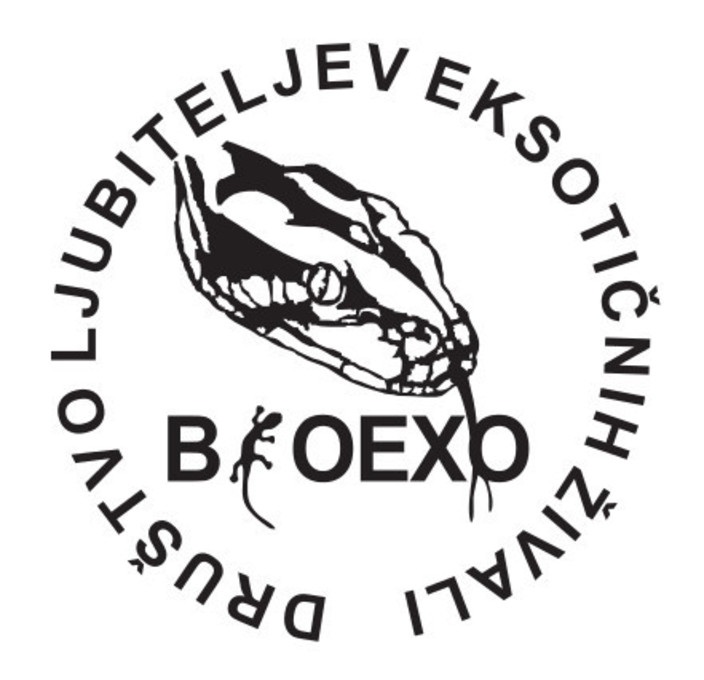
In organization of BIOEXO, the society of the exotic animals fans, Professor Igor Križaj will present a public lecture on 25 January 2018 at 16:00. The lecture entitled: “Toksikologija kačjih strupov (Toxicology of snake venoms)” will take place at the veterinary high school (BIC GVŠ), Cesti v Mestni log 47, Ljubljana. The lecture will be in Slovenian language.

Vesna Hodnik, a B.Sc. from the Biotechnical Faculty of the University of Ljubljana and a member of the "Toxins and Biomembranes" Programme Group, will present a lecture entitled Specificty of microbial cytolysins. The event is scheduled for 21 December 2017 at 14:30 in the lecture room B7 at the National Institute of Biology.

In our recent work published in BBA - Molecular and Cell Biology of Lipids, we have found that aggressive breast cancer cells take up unsaturated fatty acids (FAs) from their environment and use them for survival during starvation. Surprisingly, even the peroxidation-prone ω-3 and ω-6 polyunsaturated FAs promoted breast cancer cell survival. We identify lipid droplets, newly recognised fat storage organelles that accumulate in cancer cells, as coordinators of unsaturated FA metabolism and cell survival mechanisms. We show that lipid droplets transiently store unsaturated FAs in the form of neutral lipids, thus protecting cells against lipotoxicity, but also release FAs gradually when needed for energy production during nutrient deprivation. Our work reveals that lipid droplets are antioxidant organelles that protect cancer cells from nutrient and lipotoxic stress and targeting their metabolism may provide new opportunities in the fight against the disease.
The paper Lipid droplets induced by secreted phospholipase A2 and unsaturated fatty acids protect breast cancer cells from nutrient and lipotoxic stress by E. Jarc, A. Kump, P. Malavašič, T. O. Eichmann, R. Zimmermann and T. Petan was published online on December 9, 2017 in BBA - Molecular and Cell Biology of Lipids. https://doi.org/10.1016/j.bbalip.2017.12.006 (PDF).

On 21 and 23 November we will organize a traditional Mini-symposium of our Programme Group. On this occasion members of the group will present their research results and projects. As well, some guests, representatives of the partner groups, will presented their projects and joint activities. The event is of an informal and working character to maximally stimulate a critical discussion about the presented results and ideas, aiming to reveal novel collaboration possibilities. The detailed programme of the meeting can be found here.

Eva Jarc, B.Sc., a young researcher at JSI-B2 and a member of the "Toxins and Biomembranes" Programme Group, will present a lecture entitled Lipid droplets regulate fatty acid storage and release to protect cancer cells from nutrient and oxidative stress. The event is scheduled for 19 October 2017 at 14:30 in room B220 (2nd floor, Biochemistry building) at the Jožef Stefan Institute (JSI), Jamova cesta 39, Ljubljana.
In collaboration with our colleagues from the University Hospital Centre Split and Mostar University School of Medicine we prepared a research article entitled Ammodytin L is the main cardiotoxic component of the Vipera ammodytes ammodytes venom. The paper by Karabuva, S., Lukšić, B., Brizić, I., Latinović, Z., Leonardi, A. and Križaj, I. was accepted for publication in Toxicon in the beginning of October 2017.
In this work we extended the analysis of cardiotoxicity of the nose-horned viper (Vipera a. ammodytes) venom by defining ammodytin L, a secreted phospholipase A2 analogue, as the main cardiotoxic component of the venom. We proposed its mode of action on the heart and presented arguments that the same molecule is responsible for cardiotoxicity also at envenomations with some other European vipers, related to Vipera a. ammodytes. In addition, we exposed also a cysteine-rich secretory protein (CRISP) as an additional venom component potentially involved in modulation of the heart activity.
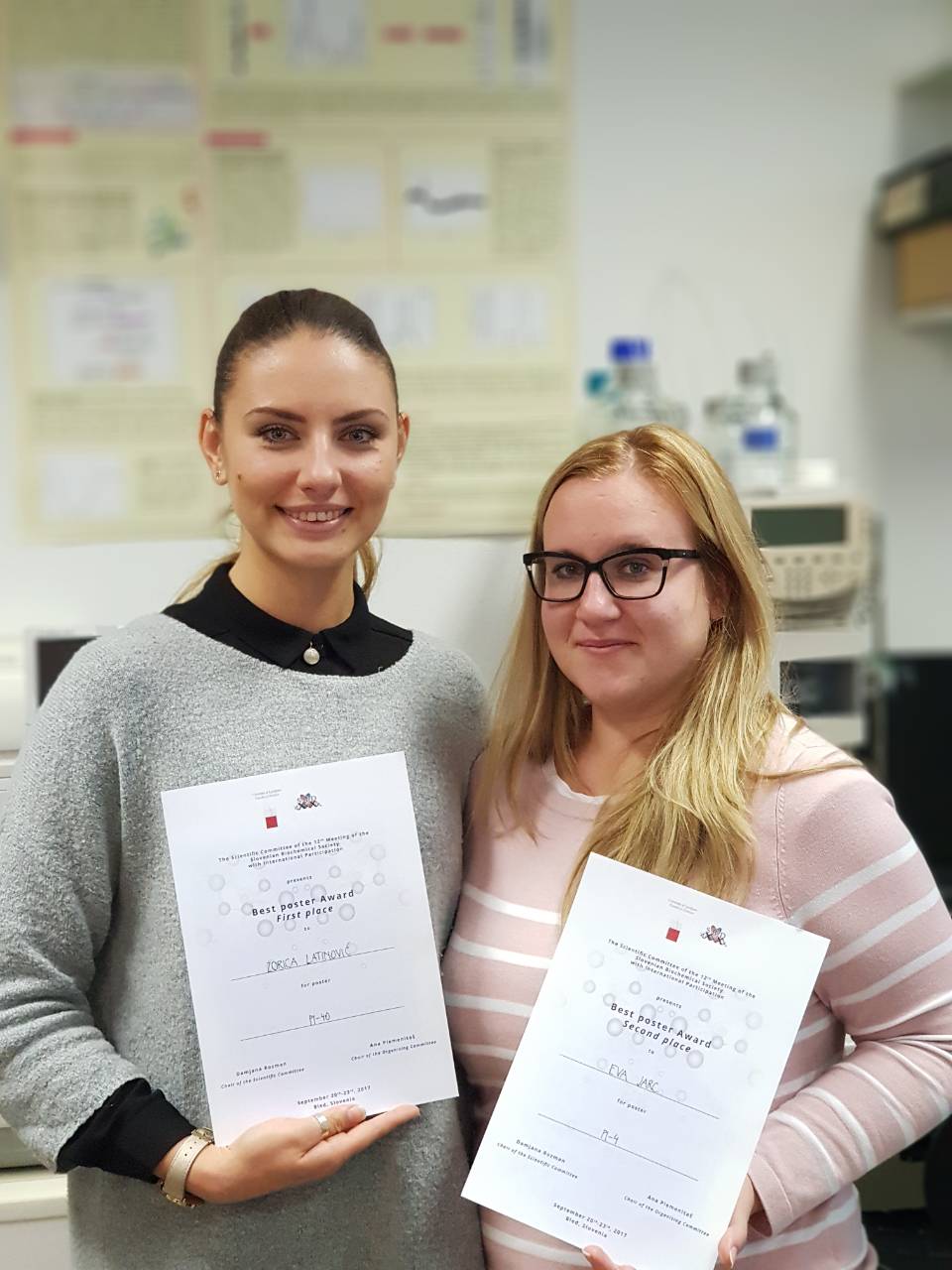
Our PhD students, Zorica Latinović and Eva Jarc, have been awarded for their poster presentations at the 12th Meeting of the Slovenian Biochemical Society in Bled between 20 and 23 September 2017. The winner of the first prize was Zorica Latinović et al. for the work Serine protease homologue from the venom of the nose-horned viper is a promising new anticoagulant lead molecule describing the isolation and properties of a protein with a significant effect on blood clotting process. By inhibiting the intrinsic coagulation pathway through binding factor IX, the snake venom serine protease homologue represents a very promising molecule to design innovative antithrombotics. The winner of the second prize was Eva Jarc et al. for the poster entitled Lipid droplets are involved in eicosanoid generation and protection against nutrient stress in breast cancer cells. They demonstrated that lipid droplets enable breast cancer cell survival during nutrient deprivation by providing lipids for energy production and also serve as a source of pro-tumorigenic lipid signalling molecules. For these reasons, lipid droplets are potential targets for therapeutic interventions in cancer therapy.
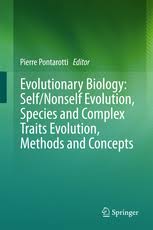
In a book Evolutionary Biology: Self/Nonself Evolution, Species and Complex Traits Evolution, Methods and Concepts, released by Springer Publishing Company, D. Kordiš participated with a chapter entitled The Life History of Domesticated Genes Illuminates the Evolution of Novel Mammalian Genes. This chapter covers the origin, distribution, diversity, and evolution of domesticated genes in mammals.
Molecular domestications of transposable elements have occurred repeatedly during the evolution of eukaryotes. Mammals possess numerous single copy domesticated genes that have originated from the intronless multicopy transposable elements. The regulatory wiring of domesticated genes and their rapid fixation in the ancestor of placental mammals have played an important role in the origin of their innovations and adaptations, such as placenta and newly evolved brain functions. The life history of domesticated genes has been mapped, from birth, their fixation in the genome, gain of regulatory elements and structural complexity to complete integration into the functional network of the cell. Molecular domestication is a good model for understanding the origination and functional evolution of novel genes.

Anastasija Panevska, B. Sc., a young researher from the Biotechnical Faculty of the University of Ljubljana and a member of the "Toxins and Biomembranes" Programme Group, will present a seminar entitled Protein complexes from the fungal genus Pleurotus, new bio-pesticides for controlling Colorado potato beetle and Western corn rootworm. The event is scheduled for 28 September 2017 at 14:00 in the lecture room B3 at the Department of Biology of the Biotechnical Faculty of the University of Ljubljana.
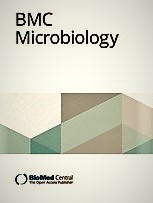
We have contributed to a research article entitled Tum1 is involved in the metabolism of sterol esters in Saccharomyces cerevisiae, by authors Uršič, K., Ogrizović, M., Kordiš, D., Natter, K. and Petrovič, U., published in the BMC Microbiology in August 2017.
In this study we discovered a new role for protein Tum1 in lipid metabolism in yeast Saccharomyces cerevisiae. The mammalian homologue of the yeast TUM1 gene, the thiosulfate sulfurtransferase (a.k.a. rhodanese) Tst, has been proposed as an obesity-resistance and antidiabetic gene. Our study also addressed the crosstalk between lipid metabolism and tRNA modification, which is another biological process where Tum1 has a role in yeast. In addition, we explored the evolutionary conservation of the rhodanese superfamily of proteins to which Tum1 and Tst belong.
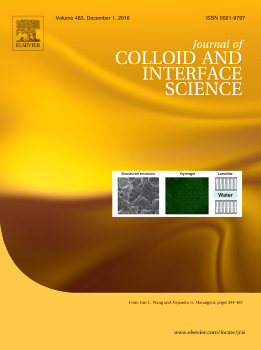
As partners, participating with proteomic analysis, we co-authored a paper entitled Formation and morphogenesis of a cuttlebone's aragonite biomineral structures for the common cuttlefish (Sepia officinalis) on the nanoscale: revisited by authors Čadež, V., Škapin, D.S., Leonardi, A., Križaj, I., Kazazić, S., Salopek-Sondi, B. and Sondi, I. in the Journal of Colloid and Interface Science, accepted for publication in August 2017.
In this study we described structural and morphological properties of the hierarchically organized, aragonite cuttlebone forms, the dorsal shield and the chambers, of the common cuttlefish (Sepia officinalis, L.). Specifically, we complemented the mechanism of the self-organized formation of aragonite nanostructures and structurally identified proteins of the soluble organic matrix (SOM) that are likely involved in the morphogenesis of the cuttlebone’s biomineral nanostructures. As we demonstrated, the cuttlebone exhibited several diverse biomineral structures of complex morphologies governed particularly by proteins in the SOM. These serve as template for the initial extracellular nucleation of the aragonite nanocrystals and were identified as Sep7, Sep8, chitin synthase 1, ficoline-2, polyubiquitin and the ubiquitin carboxyl-terminal hydrolase 32-like protein. As characteristic for proteins implicated in biomineralization, the identified Sepia officinalis SOM proteins are mostly acidic and alternatively glycosylated.

Anastasija Panevska, B. Sc., a young researher from the Biotechnical Faculty of the University of Ljubljana and a member of the "Toxins and Biomembranes" Programme Group, will present a seminar entitled Interaction of aegerolysin proteins from the fungal genus Pleurotus with artificial lipid membranes. The event is scheduled for 15 June 2017 at 15:00 in the lecture room B2 at the Biotechnical Faculty of the University of Ljubljana.

Our member contributed at the research paper entitled Single-stranded DNA binding by the helix-hairpin-helix domain of XPF protein contributes to the substrate specificity of the ERCC1-XPF protein complex, by Devashish Das, Maryam Faridounnia, Lidija Kovačič, Robert Kaptein, Rolf Boelens and Gert E. Folkers, published in Journal of Biological Chemistry.
The nucleotide excision repair protein complex ERCC1-XPF is required for incision of DNA upstream of DNA damage. Functional studies have provided insights into the binding of ERCC1-XPF to various DNA substrates. However, because no structure for the ERCC1-XPF-DNA complex has been determined, the mechanism of substrate recognition remains elusive. In this paper biochemical characterization of the substrate preferences of the helix-hairpin-helix (HhH) domains of XPF and ERCC-XPF has been made and shown that the binding to single-stranded DNA (ssDNA)/dsDNA junctions is dependent on joint binding to the DNA binding domain of ERCC1 and XPF. It has been revealed that the homodimeric XPF is able to bind various ssDNA sequences but with a clear preference for guanine-containing substrates.Based on structural models, NMR titrations, DNA-binding studies, site-directed mutagenesis, charge distribution, and sequence conservation, it was proposed that the HhH domain of ERCC1 binds to dsDNA upstream of the damage, and XPF binds to the non-damaged strand within a repair bubble.
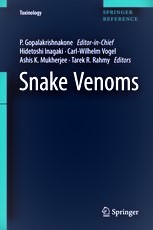
In a book Snake Venoms, just released by Springer Publishing Company, D. Kordiš and I. Križaj participated with a chapter entitled Secreted phospholipases A2 with β-neurotoxic activity.
In their chapter, they described a group of snake venom toxins, the β-neurotoxins, whose mechanism of action at the molecular level is still not completely understood, leaving their medical potential yet to be exploited. As explained, these molecules have evolved by a process of accelerated evolution from harmless digestive enzymes, the secreted phospholipases A2, to potent toxins that block synaptic signalling in vertebrate skeletal muscles. To advance the insight into the molecular basis of action of β-neurotoxins, the results of the most recent investigations have been examined critically. A draft picture of how β-neurotoxins poison the nerve terminal is presented.

Dr. Maruša Novak from the Biotechnical Faculty of the University of Ljubljana and a member of the "Toxins and Biomembranes" Programme Group, will present a seminar entitled Aegerolysins: binding properties and new targets. The event is scheduled for 18 May 2017 at 14:30 in the lecture room B2 at Biotechnical Faculty (BF) of the University of Ljubljana.

In collaboration with the JSI Department of Surface Engineering and Optoelectronics (F4), a paper entitled Mycotoxin decontamination of food: Cold atmospheric pressure plasma versus “classic” decontamination was prepared by Hojnik, N., Cvelbar, U., Tavčar-Kalcher, G., Walsh, J.L. and Križaj, I. and accepted for publication in Toxins in April 2017.
Mycotoxins are secondary metabolites produced by several filamentous fungi, which frequently contaminate our food, and can result in human diseases affecting vital systems such as the nervous and immune systems. They can also trigger various forms of cancer. Intensive food production is contributing to incorrect handling, transport and storage of the food, resulting in increased levels of mycotoxin contamination. Mycotoxins are structurally very diverse molecules necessitating versatile food decontamination approaches, which are grouped into physical, chemical and biological techniques. In this review, a new and promising approach involving the use of cold atmospheric pressure plasma is considered, which may overcome multiple weakness associated with the classical methods.

Mojca Ogrizović, B.Sc., a young researcher at JSI-B2 and a member of the "Toxins and Biomembranes" Programme Group, will present a lecture entitled Regulation of neutral lipid accumulation and disadvantageous pleiotropic effect of MKT1S288c in yeast Saccharomyces cerevisiae. The event is scheduled for 20 April 2017 at 14:30 in room B220 (2nd floor, Biochemistry building) at the Jožef Stefan Institute (JSI), Jamova cesta 39, Ljubljana.
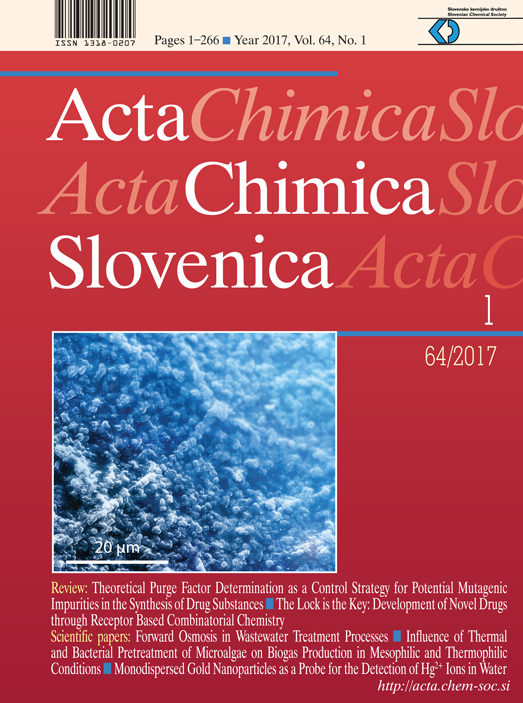
A research paper Disintegrins from the venom of Vipera ammodytes ammodytes efficiently inhibit migration of breast cancer cells by Latinović, Z., Leonardi, A., Petan, T., Žlajpah, M. and Križaj, I. was accepted for publication in Acta Chimica Slovenica. (PDF)
In a search of new natural molecules to treat breast cancer, the major type of cancer in women, Dis were isolated from the venom of the nose-horned viper (Vaa-Dis) and thoroughly characterized. Using a wound-healing assay we demonstrated that already 5 nM of Vaa-Dis efficiently inhibited the migration of highly invasive human breast adenocarcinoma cells MDA-MB-231. This exposed a promising anti-metastatic potential of Vaa-Dis and opened a good perspective of these natural snake venom proteins for further research and development towards the application in breast cancer treatment.

A research article entitled Lipid droplet formation in HeLa cervical cancer cells depends on cell density and the concentration of exogenous unsaturated fatty acids by Guštin, E., Jarc, E., Kump, A. and Petan, T. was accepted for publication in Acta Chimica Slovenica. (PDF)
Cancer cells take up unsaturated lipids from their environment and store them in cytosolic lipid droplets, which may promote tumourigenesis in various ways. In the present study we studied the ability of mono- and polyunsaturated fatty acids (FAs) to affect lipid droplet formation and resistance to stress in HeLa cervical cancer cells. Our study suggests that lipid droplets are associated with cancer cell growth and proliferation and that unsaturated fatty acids may both reduce or promote lipid droplet accumulation in these cells. Surprisingly, in contrast to some types of highly tumourigenic breast cancer cells, HeLa cells do not accumulate large amounts of lipid droplets and cannot efficiently use unsaturated FAs to survive the stress induced by nutrient deprivation. This study supports the idea that different cancer cells possess specific alterations in lipid metabolism that may be utilized to design new strategies to fight the disease.

In the scope of the bilateral project BI-HR/16-17-002 between Slovenia and Croatia, a young researcher Monika Tunjić from the Centre for Research and Knowledge Transfer in Biotechnology, University of Zagreb, is visiting our Department. For four weeks, from 20 March to 14 April, she has been working with our crew on the project “Antivenomics as a tool to increase efficacy of specific and paraspecific serotherapy against envenomation with Viperidae venoms”.
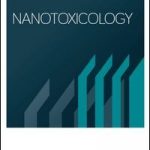
As partners, participating with cell culture studies, we co-authored a paper entitled Harmful at non-cytotoxic concentrations: SiO2-SPIONs affect surfactant metabolism and lamellar body biogenesis in A549 human alveolar epithelial cells by authors Kononenko, V., Erman, A., Petan, T., Križaj, I., Kralj, S., Makovec, D. and Drobne, D. in Nanotoxicology, accepted for publication in March 2017.
The pulmonary delivery of nanoparticles is a promising approach in nanomedicine. For the efficient and safe use of inhalable nanoparticles, understanding of nanoparticle interference with lung surfactant metabolism is needed. Our results on A549 human lung cancer cells, a model of alveolar type II cells, demonstrate that non-cytotoxic concentrations of silica-coated superparamagnetic iron oxide nanoparticles (SiO2-SPIONs) interfere with surfactant metabolism and lamellar bodies (LB) biogenesis, leading to disturbed ability to reduce hypophase surface tension. To ensure the safe use of nanoparticles for pulmonary delivery, we propose that potential nanoparticle interference with LB biogenesis is obligatorily taken into account.

Zorica Latinović, B.Sc., a young researcher at JSI-B2 and a member of the "Toxins and Biomembranes" Programme Group, will present a lecture entitled Two serine proteases from the venom of the nose-horned viper (Vipera a. ammodytes) and their effects on the intrinsic blood coagulation pathway. The event is scheduled for 23 March 2017 at 14:30 in room B220 (2nd floor, Biochemistry building) at the Jožef Stefan Institute (JSI), Jamova cesta 39, Ljubljana.

Asst. Prof. Toni Petan, a member of Department of Molecular and Biomedical Sciences, will present a lecture entitled Lipid droplets and the management of nutrient and oxidative stress in cancer. The event is scheduled for 22 March 2017 at 16:00 in room B220 (2nd floor, Biochemistry building) at the Jožef Stefan Institute (JSI), Jamova cesta 39, Ljubljana.

Sabina Ott, B.Sc., a young researcher at JSI-B2 and a member of the "Toxins and Biomembranes" Programme Group, will present a lecture entitled Analysis of RNA viruses in invertebrates. The event is scheduled for 23 February 2017 at 14:30 in room B220 (2nd floor, Biochemistry building) at the Jožef Stefan Institute (JSI), Jamova cesta 39, Ljubljana.

Dr. Jernej Šribar, a member of the "Toxins and Biomembranes" Programme Group, will present a lecture entitled Ammodytoxin targets R25 in the process of neurotoxicity. The event is scheduled for 26 January 2017 at 13:00 in room B220 (2nd floor, Biochemistry building) at the Jožef Stefan Institute (JSI), Jamova cesta 39, Ljubljana.
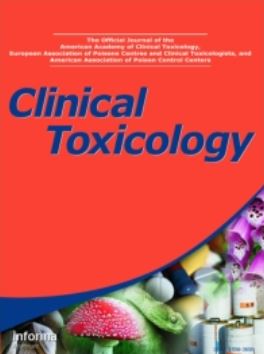
In collaboration with the University Medical Centre Ljubljana and University of Zagreb, Croatia, an article entitled Vipera ammodytes bites treated with antivenom ViperaTAb®: a case series with pharmacokinetic evaluation has been prepared by Brvar, M., Kurtović, T., Grenc, D., Lang Balija, M., Križaj, I. and Halassy, B., and accepted for publication in Clinical Toxicology in December 2016.
In clinical practice it is difficult to differentiate between Vipera berus and V. ammodytes venomous bites. In the past this was not a concern, but due to the current shortage in ViperfavTM and European viper venom antiserum availability, V. a. ammodytes venomous bites have recently been treated with ViperaTAb®, which is a pharmaceutical formulation containing a monospecific ovine Fab fragments against the venom of V. berus. In this paper we report that in patients envenomed by V. a. ammodytes venom, ViperaTAb® reduces moderate swelling and temporarily improves systemic effects, except neurological symptoms. ViperaTAb® application induces a decrement of V. ammodytes venom level in the blood, but did not affect serum concentration of neurotoxic ammodytoxins in the one patient with measurable concentrations.

The collaborative work on an ARRS project resulted in the first article accepted for publication in December 2016. The PLoS One paper, entitled Dispersion of nanoparticles in different media importantly determines the composition of their protein corona, by Strojan, K., Leonardi, A., Bregar, V.B., Križaj, I., Svete, J. and Pavlin, M., exposes the key importance of a dispersion, protein-containing media in determining the protein composition of the corona of nanoparticles (NPs). NPs corona proteins importantly govern the interaction of NPs with their surroundings imposing in this way their medical applicability. We showed how the differences between specific constituents of the media used for dispersion of NPs were responsible for the differences in protein corona composition formed in the presence of fetal bovine serum. Interestingly, corona of silica NPs contained three complement system-related proteins: complement factor H, complement C3 and complement C4.

Valerija Vezočnik, B. Sc., a young researher from the Biotechnical Faculty of the University of Ljubljana and a member of the "Toxins and Biomembranes" Programme Group, will present a seminar entitled Nanoemulsions of lipid droplets covered by a monolayer of sphingomyelin and cholesterol. The event is scheduled for 22 December 2016 at 14:30 in the lecture room B2 at the Biotechnical Faculty of the University of Ljubljana.

Members of the Department, Dr. Adrijana Leonardi, Dr. Jernej Šribar, Zorica Latinović, B. Sc. and Prof. Igor Križaj, were the main contributors to the popular science TV broadcast Ugriznimo znanost at the programme 1 of the national TV on 8 December 2016. The broadcast entitled “Živalski strupi – smrtonosni in uporabni” (Animal venoms – deadly and useful) is in Slovenian language, and is available at http://4d.rtvslo.si/arhiv/ugriznimo-znanost/174441881.

Prof. Igor Križaj was the main interviewee in the popular science broadcast Frekvenca X at the national radio station Val 202 on 8 December 2016. You can replay the broadcast on “Animal venoms” at http://4d.rtvslo.si/arhiv/frekvenca-x/174442156. The broadcast is in Slovenian language.

On 22 and 23 November we organized a traditional Mini-symposium of our Programme Group. On this occasion members of the group presented their research results and projects. As well, some guests, representatives of the partner groups, presented their projects and joint activities. The event was of an informal and working character to maximally stimulate a critical discussion about the presented results and ideas, aiming to reveal novel collaboration possibilities. The detailed programme of the meeting can be found here.

A research article entitled Strong and widespread action of site-specific positive selection in the snake venom Kunitz/BPTI protein family by V. Župunski and D. Kordiš was published in Scientific Reports in November 2016.
In the present study we analysed the action of site-specific positive selection and its impact on the structurally and functionally important parts of the snake venom Kunitz/BPTI family of proteins. By using numerous models we demonstrated the presence of large numbers of site-specific positively selected sites that can reach between 30-50% of the Kunitz domain. The mapping of the positively selected sites on the 3D model of Kunitz/BPTI inhibitors has shown that these sites are located in the inhibitory loops and in the Kunitz scaffold. Amino acid replacements have been found exclusively on the surface, and the vast majority of replacements are causing the change of the charge. The consequence of these replacements is the change in the electrostatic potential on the surface of the Kunitz/BPTI proteins that may play an important role in the precise targeting of these inhibitors into the active site of S1 family of serine peptidases.
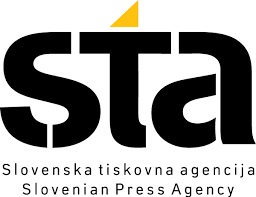
After giving his lecture in the scope of Science on the Street project, Prof. Igor Križaj has been also interviewed by the Slovenian Press Agency (STA) journalist. Her report (in Slovenian language) is available at http://znanost.sta.si/2318140/z-zivalskimi-strupi-do-zdravljenja-bolezni-pri-ljudeh.
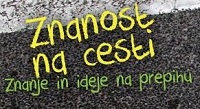
Prof. Igor Križaj, Head of Department, presented a public lecture entitled Animal Toxins: from Deadly to the Healthy on 26 October 2016, at 19:00 in Kavarna Union.
The event was organized in the scope of Science on the Street project (8th Cycle of popular science lectures in Kavarna Union) by the Slovenian Academic Society for Science and Engineering (SATENA). The lecture (presented in Slovenian language) is available at Videolectures.net.

Merve Yılmazer, a PhD student from the Istanbul University, started her stint as a visiting researcher at our department on 20 October 2016. She will be trained developing and using in CRISPR/Cas9 genome editing tools in yeast.

Eva Jarc, B.Sc., a young researcher at JSI-B2 and a member of the "Toxins and Biomembranes" Programme Group, will present a lecture entitled Lipid droplets - key regulators of metabolic and signalling changes in cancer. The event is scheduled for 20 October 2016 at 14:30 in room B220 (2nd floor, Biochemistry building) at the Jožef Stefan Institute (JSI), Jamova cesta 39, Ljubljana.

As partners in consortium of research groups gathered on targeted research project (CRP) to define molecular parameters for protection of Carniolan honeybee, we participated at preparation of a paper entitled Novel aspects in characterization of Carniolan honey bee (Apis mellifera carnica, Pollmann 1879) by authors Božič, J., Kordiš, D., Križaj, I., Leonardi, A., Močnik, R., Nakrst, M., Podgoršek, P., Prešern, J., Sušnik Bajec, S., Zorc, M., Zurc, J. and Dovč, P. in Acta Agriculturae Slovenica September 2016 issue.
Due to its soft temper Carniolan honey bee (Apis mellifera carnica) is a well-accepted and popular honey bee subspecies. Its original habitat is Balkan Peninsula with neighbouring regions. In this study we present thorough characterization of Carniolan honey bee in its home country, Slovenia, using different approaches and compare some traits with populations in the neighbouring countries. In the paper, we display genetic analyses (microsatellites and mtDNA sequences), bioinformatics analysis of available DNA sequence data, phenotypic characterisation using cubital index and lengths of tibia and proboscis, proteomic analysis of royal jelly as well as analysis of its dancing behaviour.
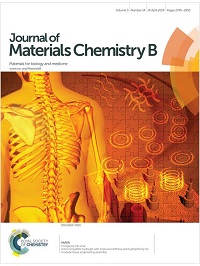
With protein analysis we contributed to a research article entitled Size of silk fibroin β-sheet domains affected by Ca2+, by Drnovšek, N., Kocen, R., Gantar, A., Drobnič-Košorok, M., Leonardi, A., Križaj, I., Rečnik, A. and Novak, S., published in Journal of Materials Chemistry B in September 2016.
Silk fibroin is one of the most promising scaffold materials in tissue regeneration, particularly at facilitation of bone formation in osteo and osteochondral defects. It possesses good physical properties and it is biocompatible if prepared without sericin, an immunogenic component of silk. We demonstrated that Ca2+ ions induced a reduction of β-sheet domain size of fibroin that effectively controls it scaffolding properties, such as degradation and mechanical stiffness. We showed that these changes occurred already in fibroin solution prior to scaffold preparation. Reduction of β-sheet domains improves elasticity of silk fibroin preparation and allows its faster degradation. Ca2+ was also shown to be beneficial in the formation of hydroxyl-apatite sheets on the fibroin surface.

Vesna Hodnik, a B.Sc. from the Biotechnical Faculty of the University of Ljubljana and a member of the "Toxins and Biomembranes" Programme Group, will initiate the 2016/2017 series of the Programme Group seminars by presenting a lecture entitled Identification of specific plant sphingolipids that are receptor molecules for NLP proteins. The event is scheduled for 22 September 2016 at 14:30 in the lecture room B3 at the Biotechnical Faculty of the University of Ljubljana.
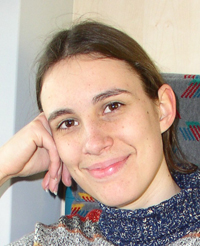
Dr. Mojca Mattiazzi Ušaj, a former member of the Department, received the Lapanje Distinction, given by the Slovenian Biochemical Society to younger members for an outstanding contribution to the development of biochemical science internationally and domestically, on 2 September 2016.
Mojca graduated in biochemistry in 2005, receiving the University of Ljubljana Prešeren award for the best diploma thesis. Between 2005 and 2010 she worked on her PhD thesis at our department, under co-supervision of Assoc. Prof. Uroš Petrovič and Prof. Igor Križaj. Since 2010 she has worked as a post-doctoral fellow at The Donnelly Centre for Cellular and Biomolecular Research of the University of Toronto, in the laboratory of the renowned scientists Prof. Charlie Boone and Prof. Brenda Andrews. Mojca is one of the world-leading researchers in the field of functional genomics and quantitative cell biology. She initiated her work in this field at our department, and pursued her cutting-edge research further in Toronto. The results of her work will undoubtedly represent an important milestone in the development of concepts and approaches to studying biological systems in the 21st century.
In collaboration with our colleagues from the University Hospital Centre Split we published a research article entitled Cardiotoxic effects of the Vipera ammodytes ammodytes venom fractions in the isolated perfused rat heart, by authors Karabuva, S., Brizić, I., Latinović, Z., Leonardi, A., Križaj, I., and Lukšić, B. published in Toxicon in the beginning of September 2016.
Viperinae venom components that affect the heart function are unknown. To unravel their nature we analysed cardiotoxic effects of individual fractions of the nose-horned viper venom on the isolated rat heart. Cardiotoxicity of the Vipera a. ammodytes venom was manifested by significant decrease of heart rate and coronary flow, the increase of diastolic, and the decrease of systolic and developed left ventricular pressures. Hearts suffered rapid and irreversible asystolia without atrioventricular blockade. They underwent also ventricular fibrillation and ventricular tachycardia. Venom fraction that disturbed heart functioning most potently harboured mainly secreted phospholipases A2 indicating that the cardiotoxicity originates from (one) of these molecules.
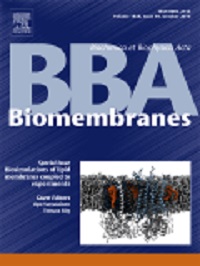
With proteomic study we contributed to a research article entitled Characterisation of plasmalemmal shedding of vesicles induced by the cholesterol/sphingomyelin binding protein, ostreolysin A-mCherry, by authors Skočaj, M., Yu, Y., Grundner, M., Resnik, N., Bedina Zavec, A., Leonardi, A., Križaj, I., Guella, G., Maček, P., Erdani-Kreft, M., Frangež, R., Veranič, P. and Sepčić, K., published in Biochimica et Biophysica Acta (BBA) - Biomembranes in the beginning of September 2016.
Our results show that OlyA-mCherry, a fluorescent derivative of Ostreolysin A an aegerolysin from the oyster mushroom Pleurotus ostreatus, by binding to cholesterol/sphingomyelin membrane nanodomains induces local positive membrane curvature and specific lipid sorting into discrete patches, which promotes plasmalemmal blebbing and extracellular vesicles shedding from the cells. The process is independent on temperature and intracellular Ca2+ signalling, and does not compromise cell viability and ultrastructure. Such vesicles constitute thus a potentially interesting model for biophysical and biochemical studies of cell membranes, and a system for non-invasive sampling of cytosolic proteins from cells for metabolic fingerprinting.

In collaboration with the University Medical Centre Ljubljana and University of Zagreb, Croatia, we have written an article entitled A single dose of ViperfavTM may be inadequate for Vipera ammodytes snake bite: A case report and pharmacokinetic evaluation, by authors Kurtović, T., Brvar, M., Grenc, D., Lang Balija, M., Križaj, I. and Halassy, B., accepted for publication in the Toxins on 10 August 2016.
The study demonstrated for the first time that the commercially available antivenom ViperfavTM, proved to be safe and effective for the treatment of envenomations by Vipera aspis (asp viper) and Vipera berus (common adder), may not be adequate in the recommended dose for treating serious V. a. ammodytes (nose-horned viper) envenomation. In such case, serial blood counts and coagulation profiles should be performed to help guide treatment decisions, along with supplemental administration of the antivenom as indicated.

We have contributed to a research article entitled Time-dependent uptake and trafficking of vesicles capturing extracellular S100B in cultured rat astrocytes, by authors Lasič, E., Galland, F., Vardjan, N., Šribar, J., Križaj, I., Concli Leite, M., Zorec, R. and Stenovec, M., published in the Journal of Neurochemistry in the beginning of July 2016.
The study sheds light on the clearance mechanism of a cytoplasmic protein, S100B, in astrocytes, supporting cells in the central nervous system. Upon cell damage, cytoplasmic proteins may exit into the extracellular space. S100B is one such protein and it may exert toxic effects on neighbouring cells unless it is removed from the extracellular space. This research shows that astrocytes exhibit RAGE (receptor for advanced glycation end-product)- and dynamin-dependent vesicular mechanism to efficiently remove S100B from the extracellular space. If a similar process occurs in vivo, astroglia may mitigate the toxic effects of extracellular S100B by this process under pathophysiologic conditions.
